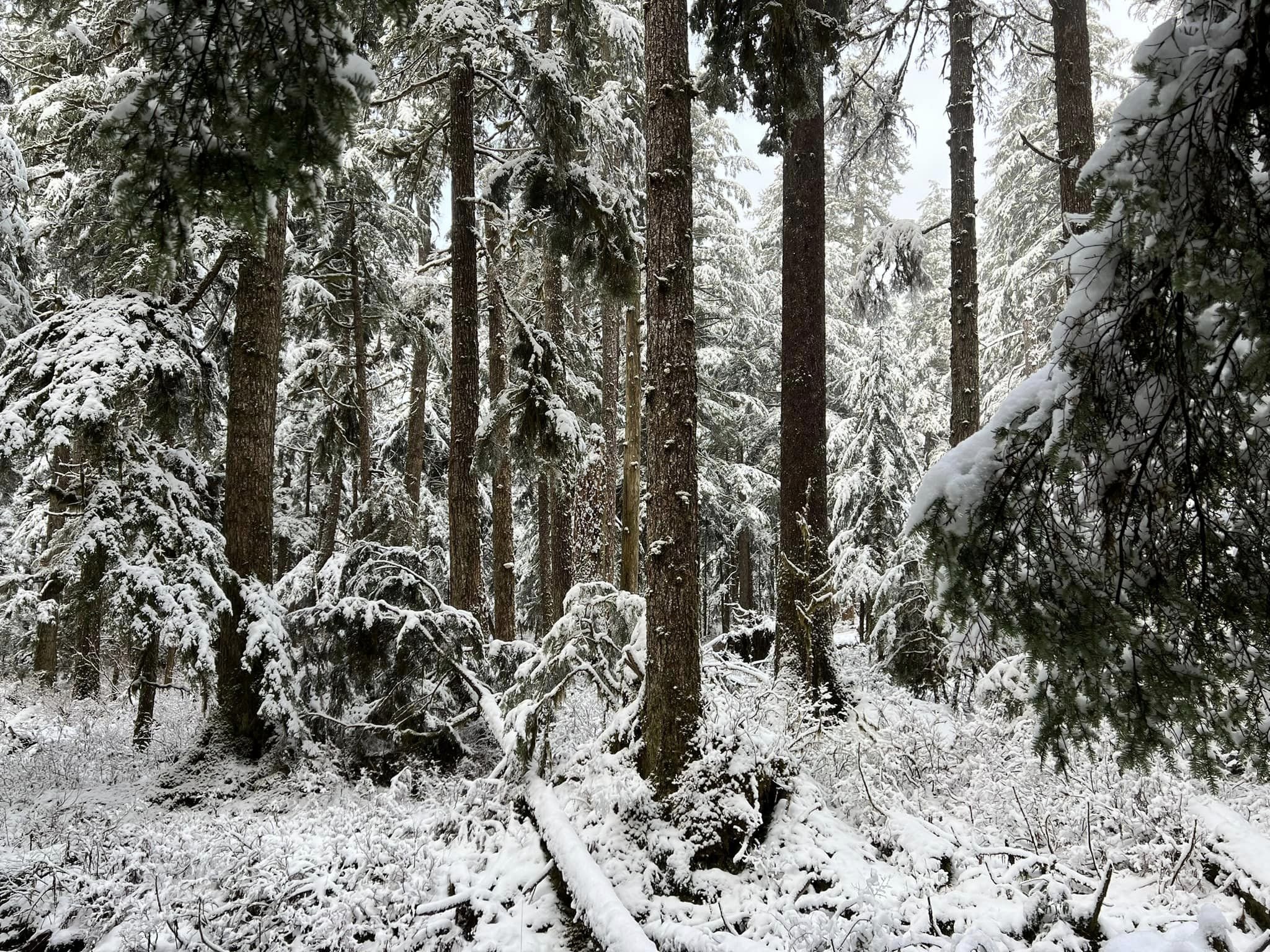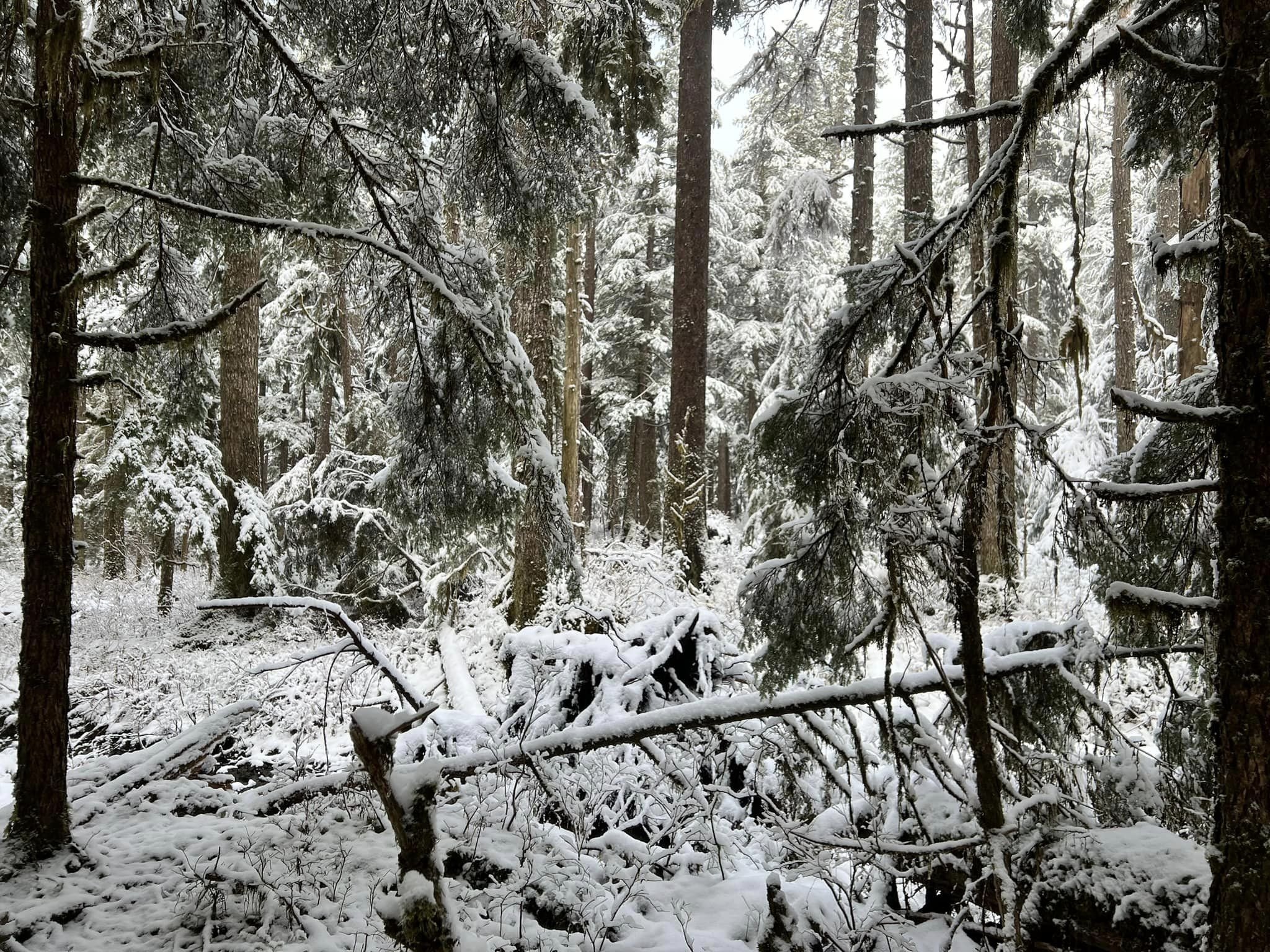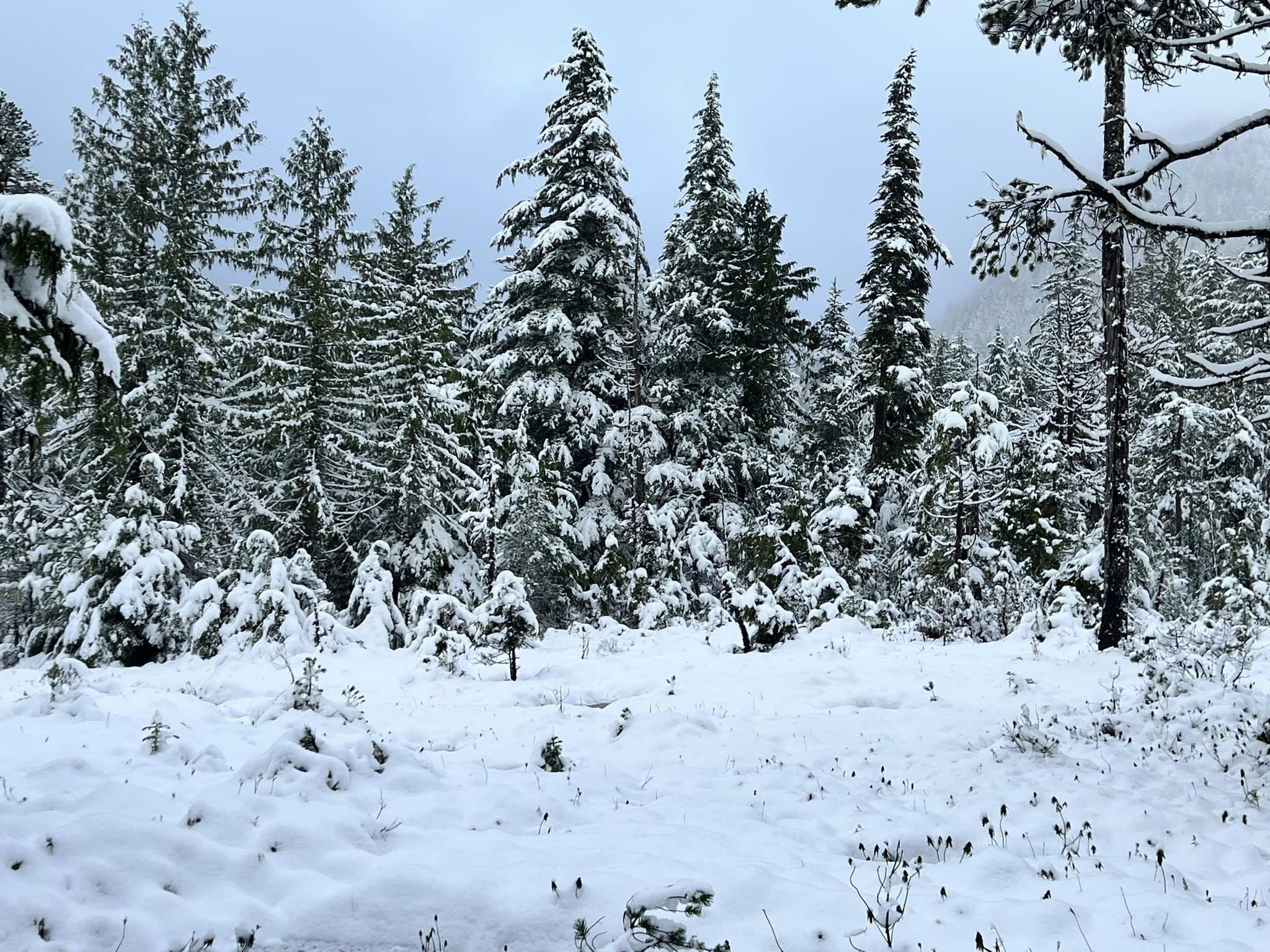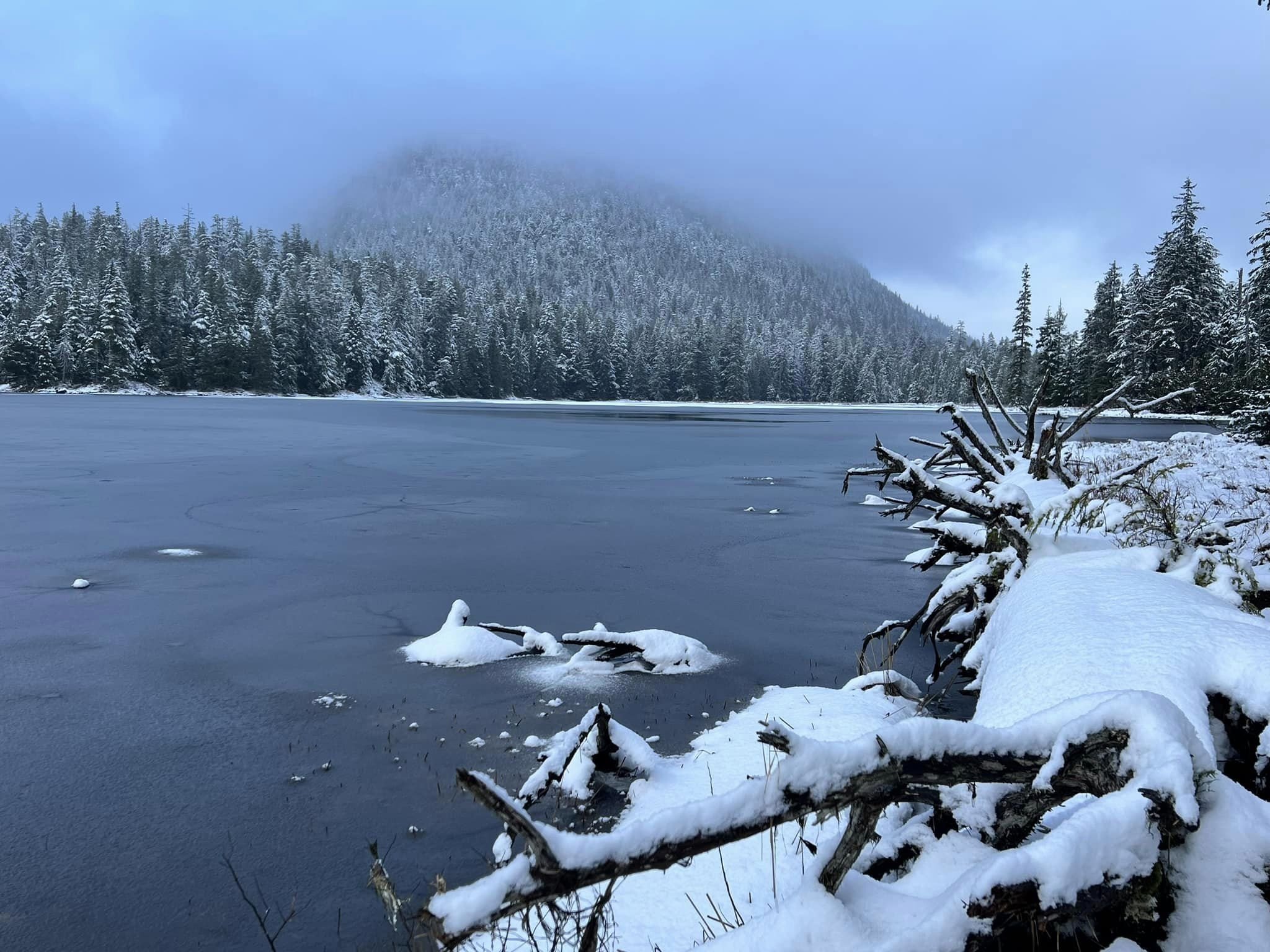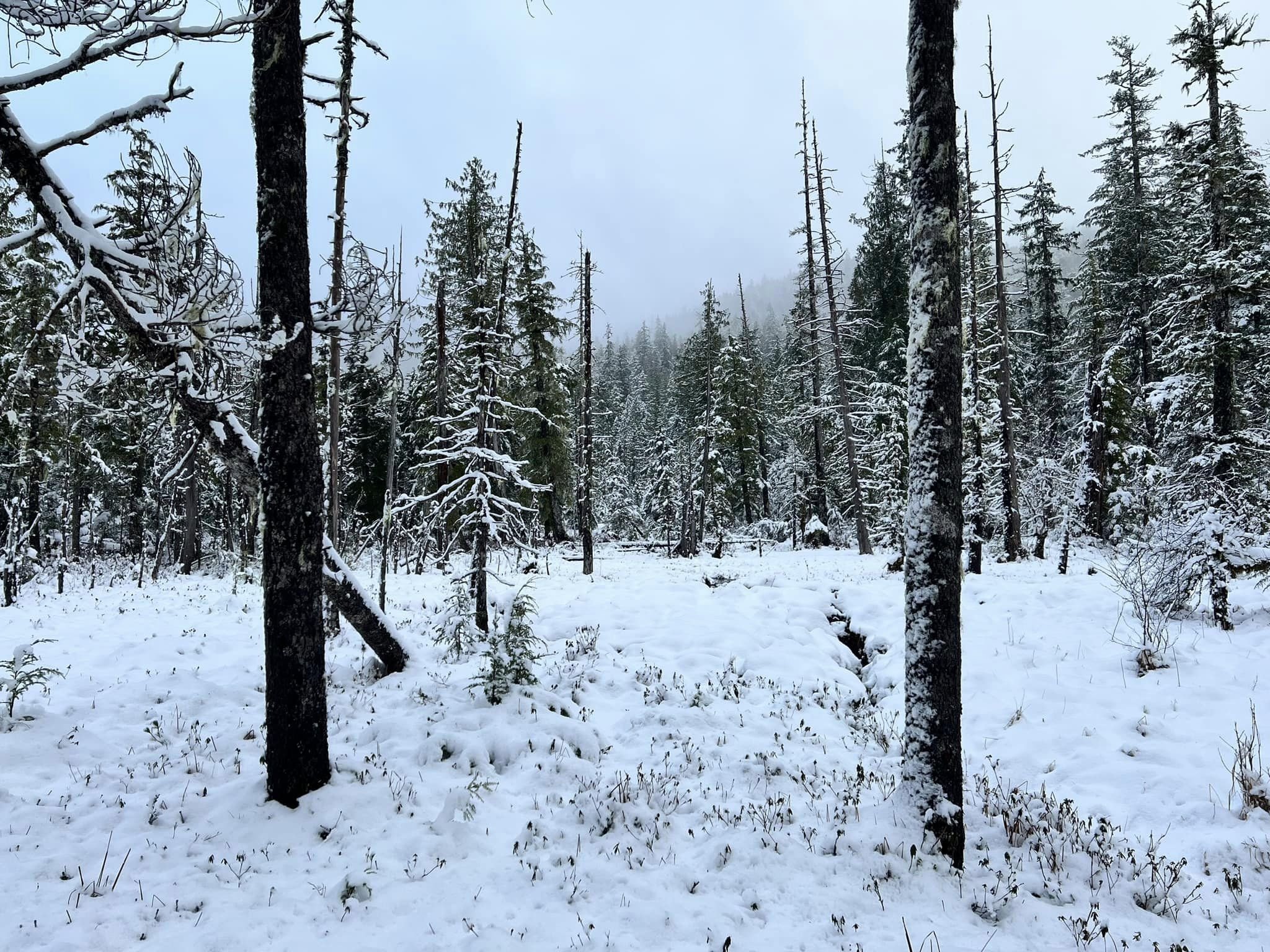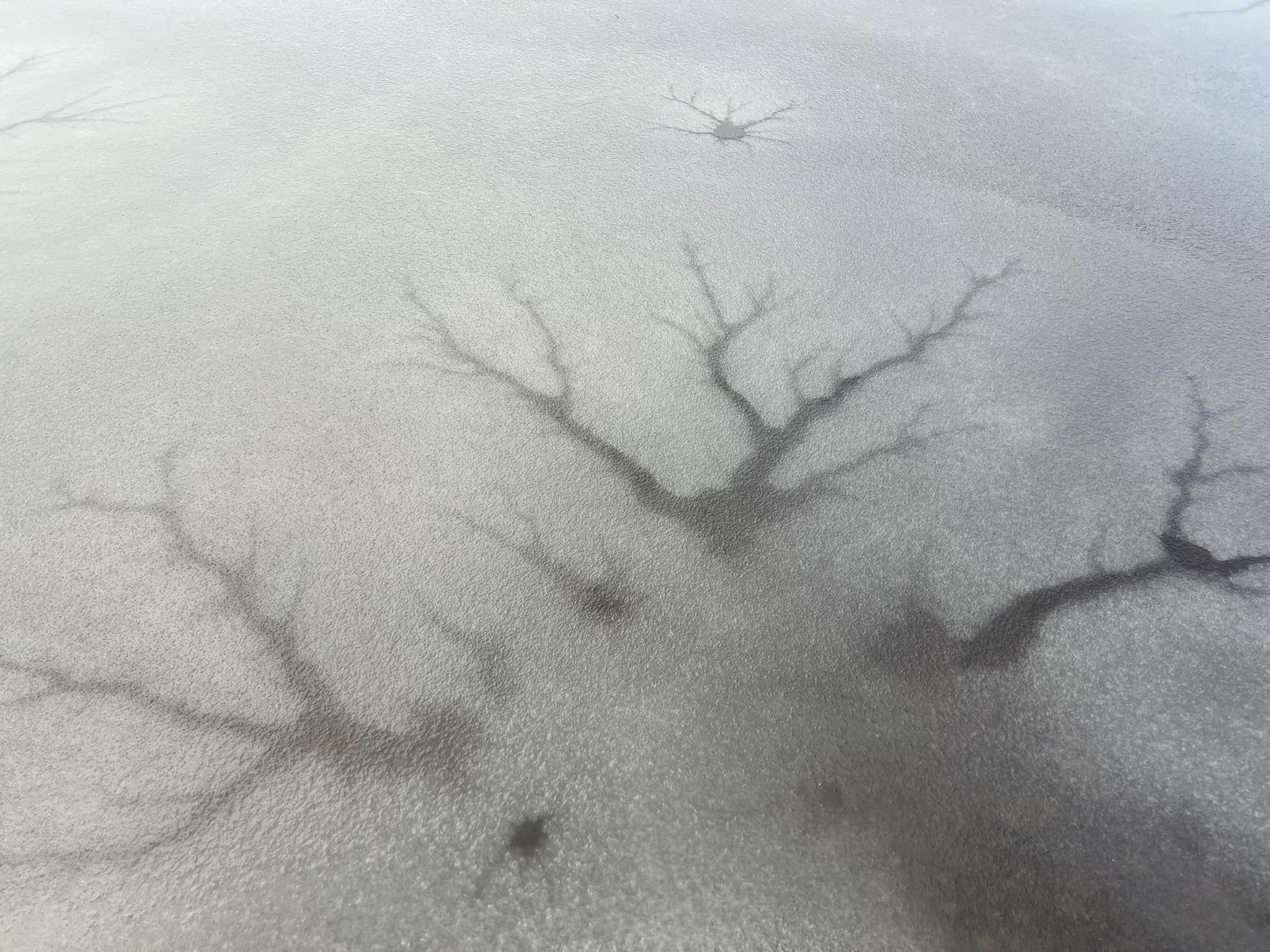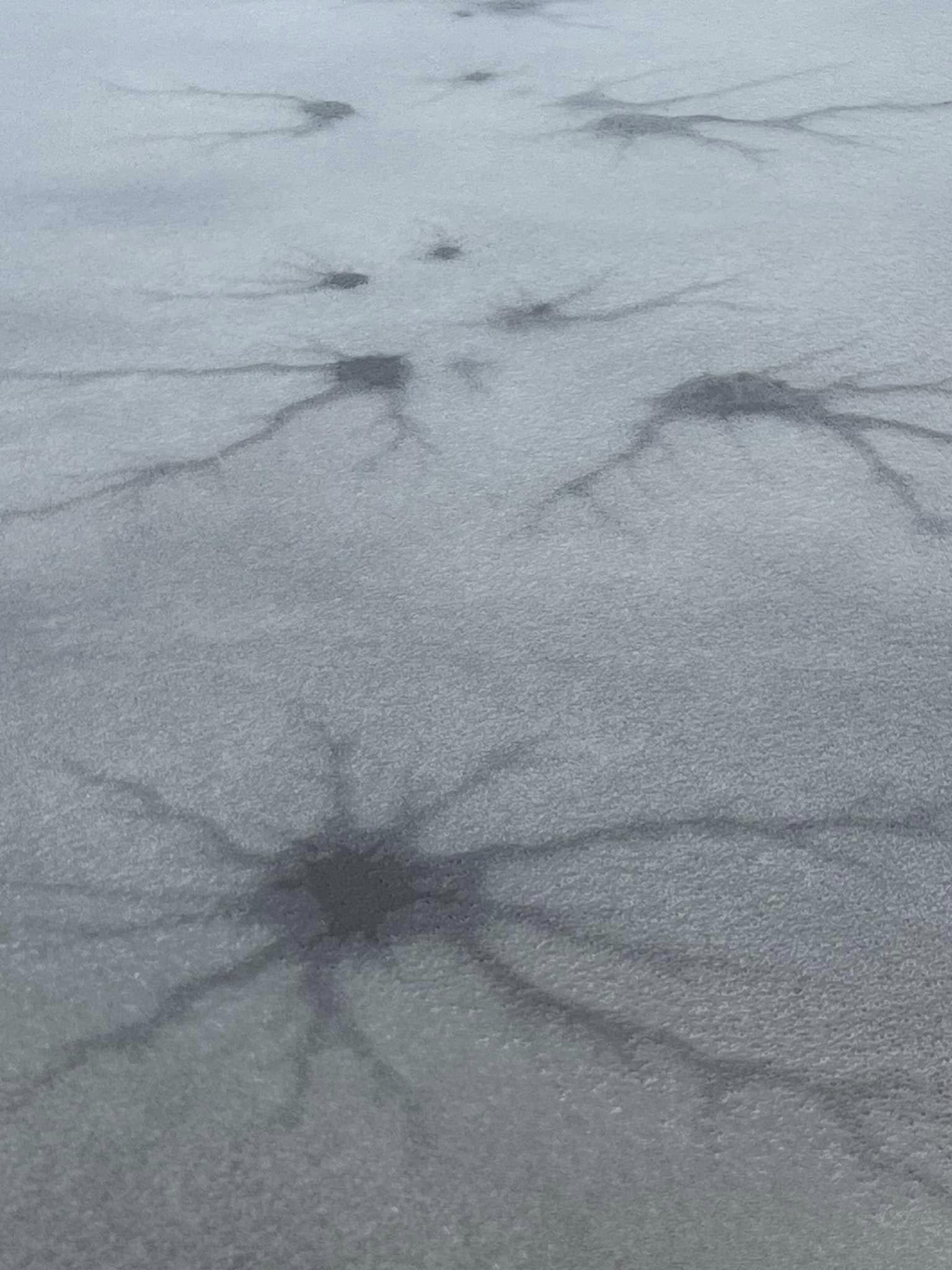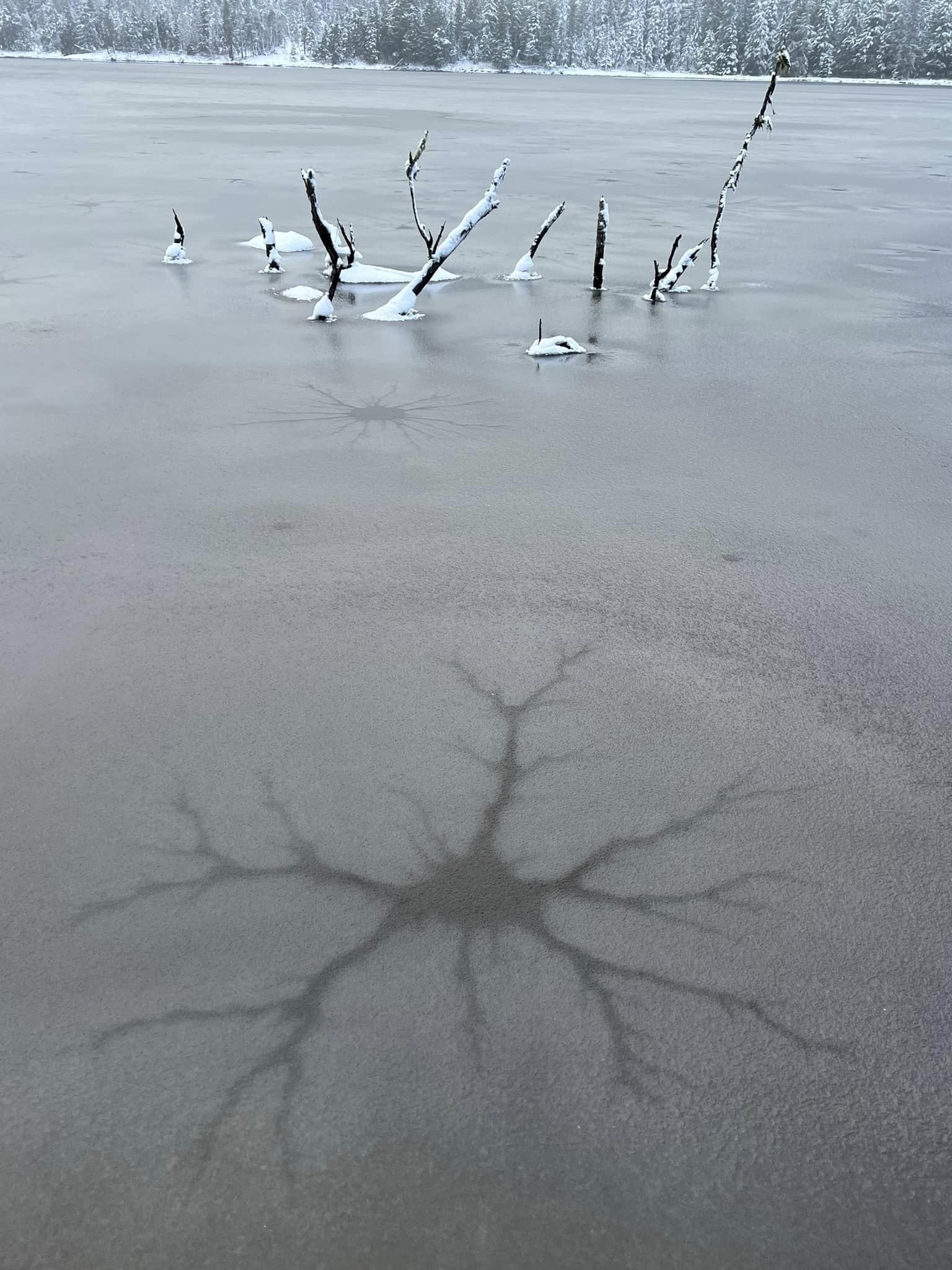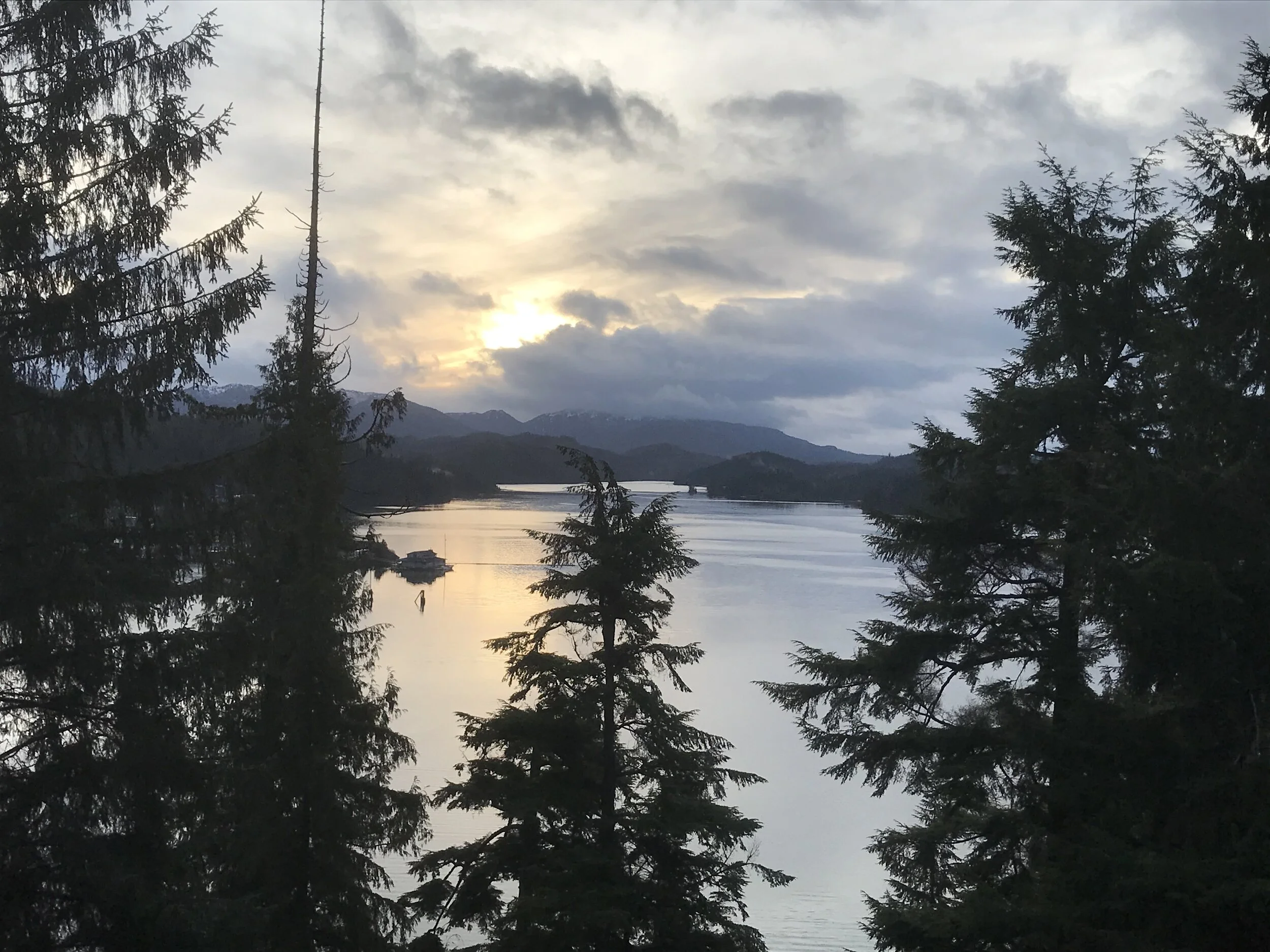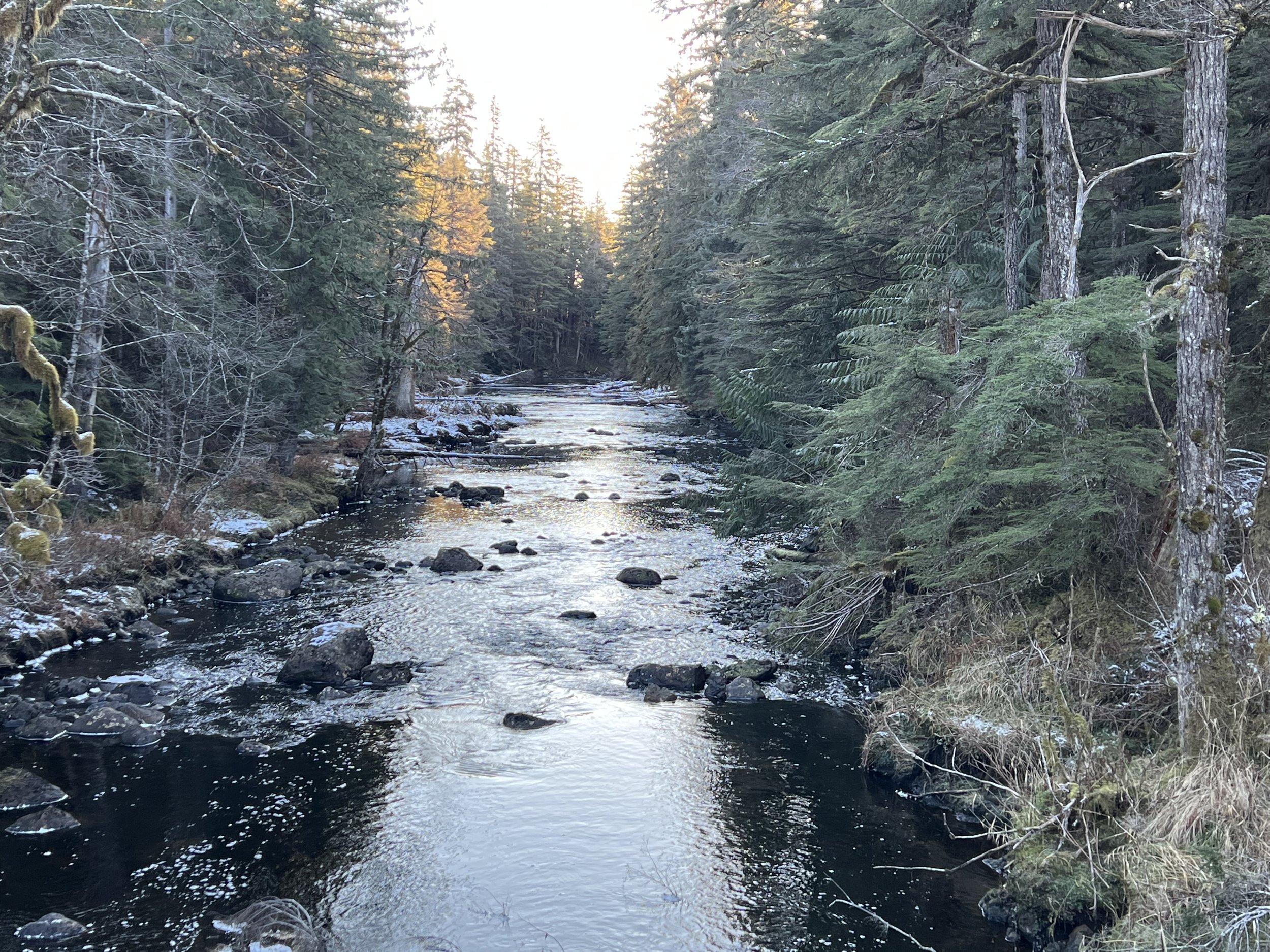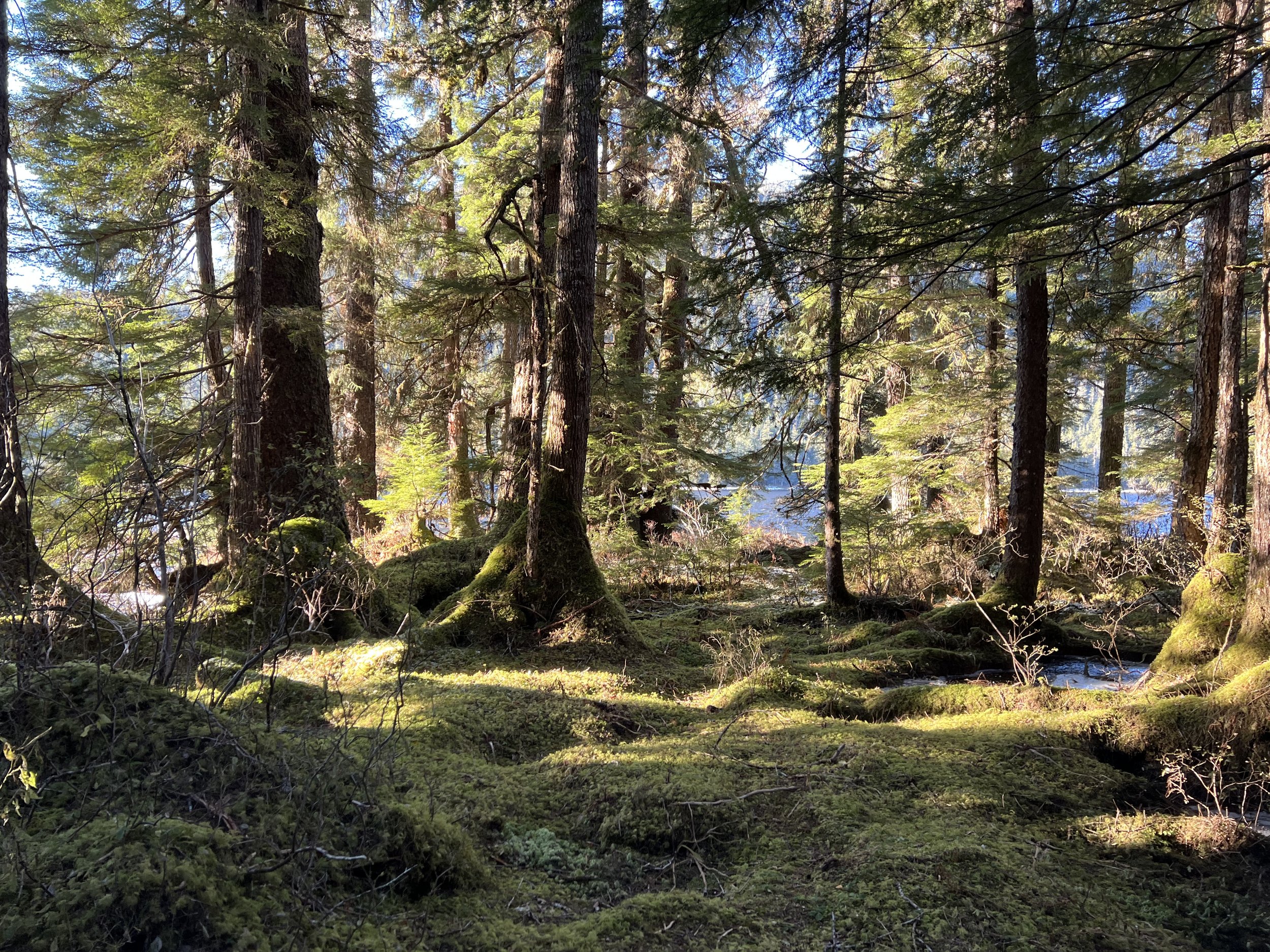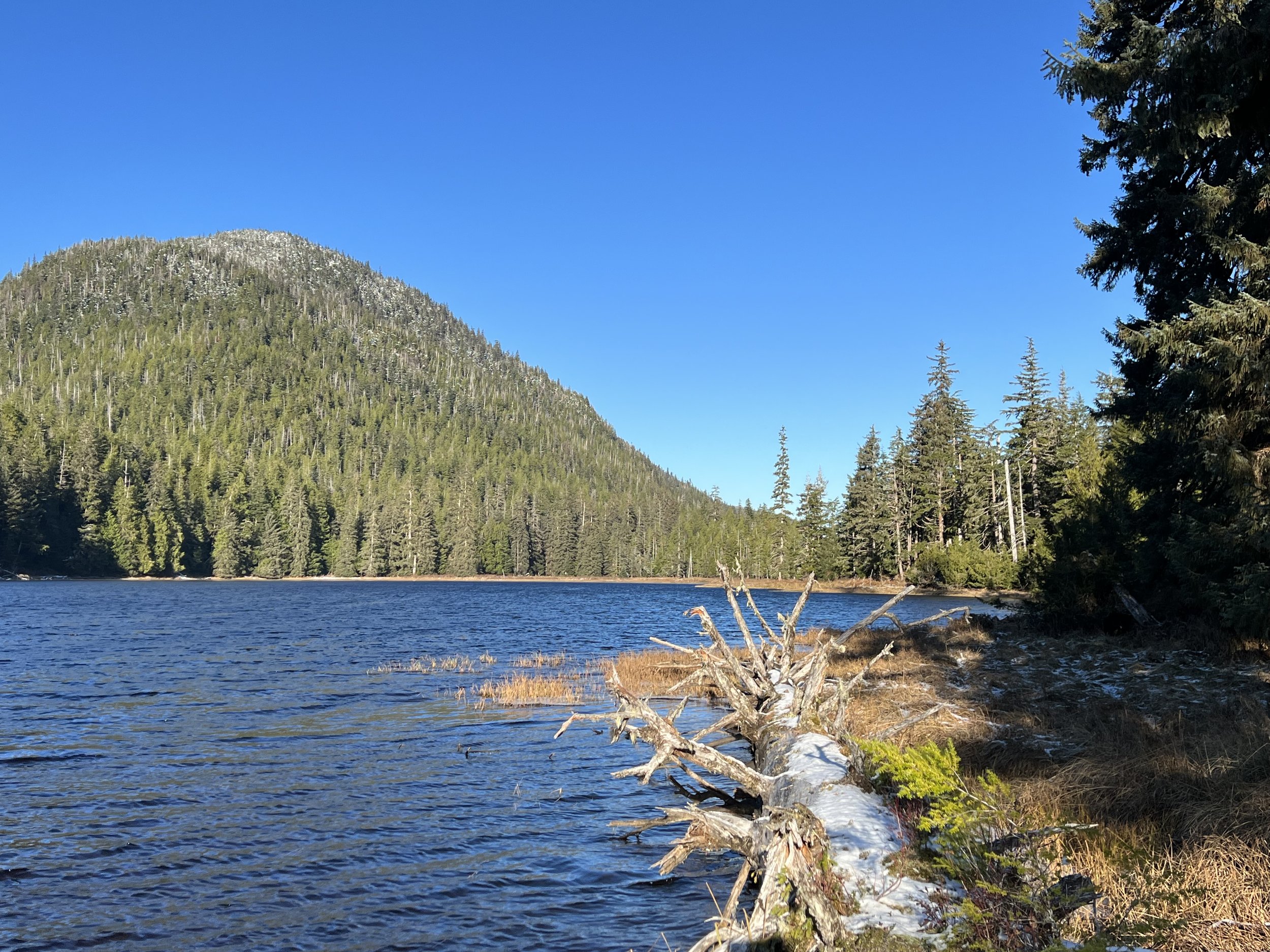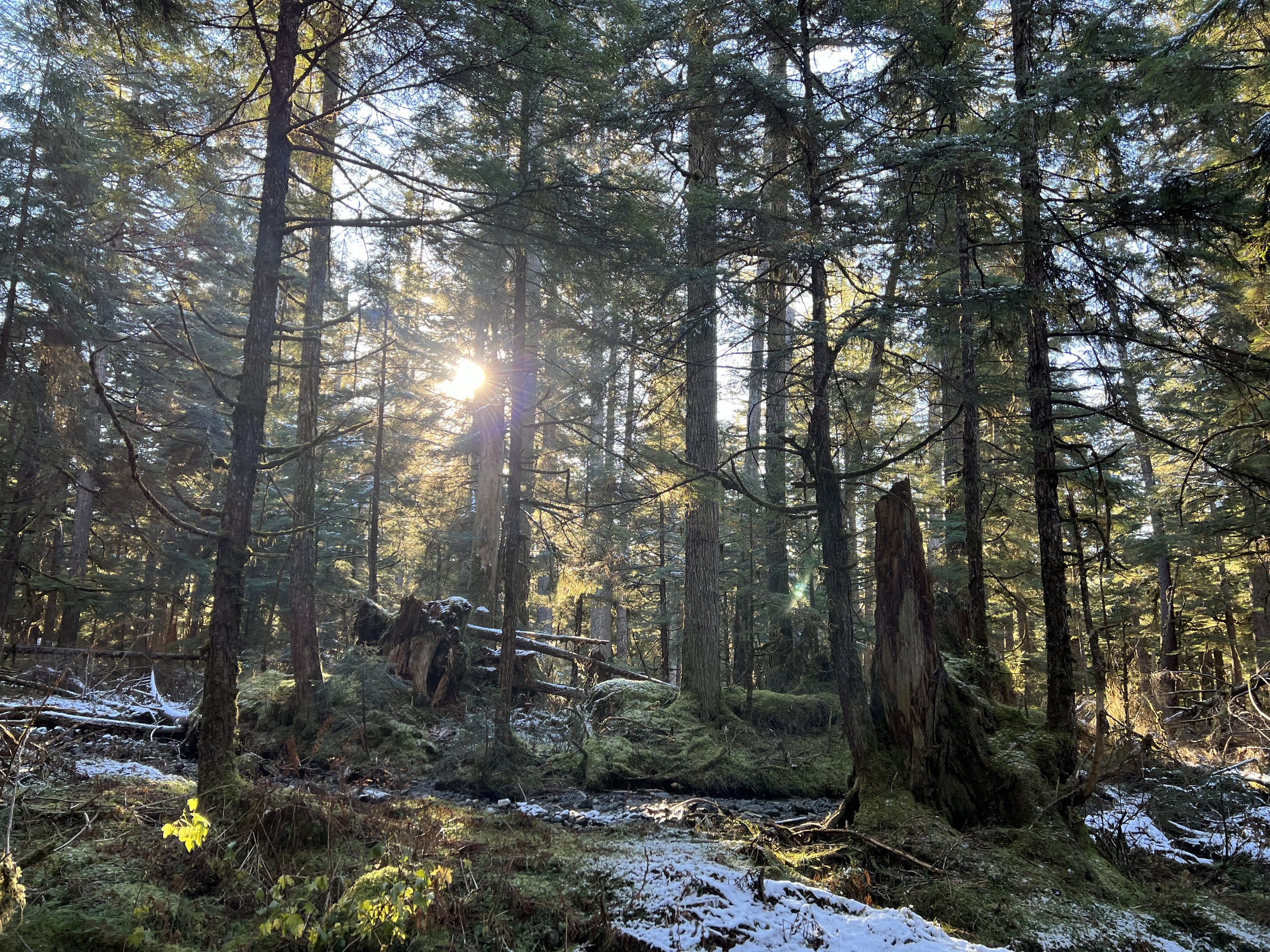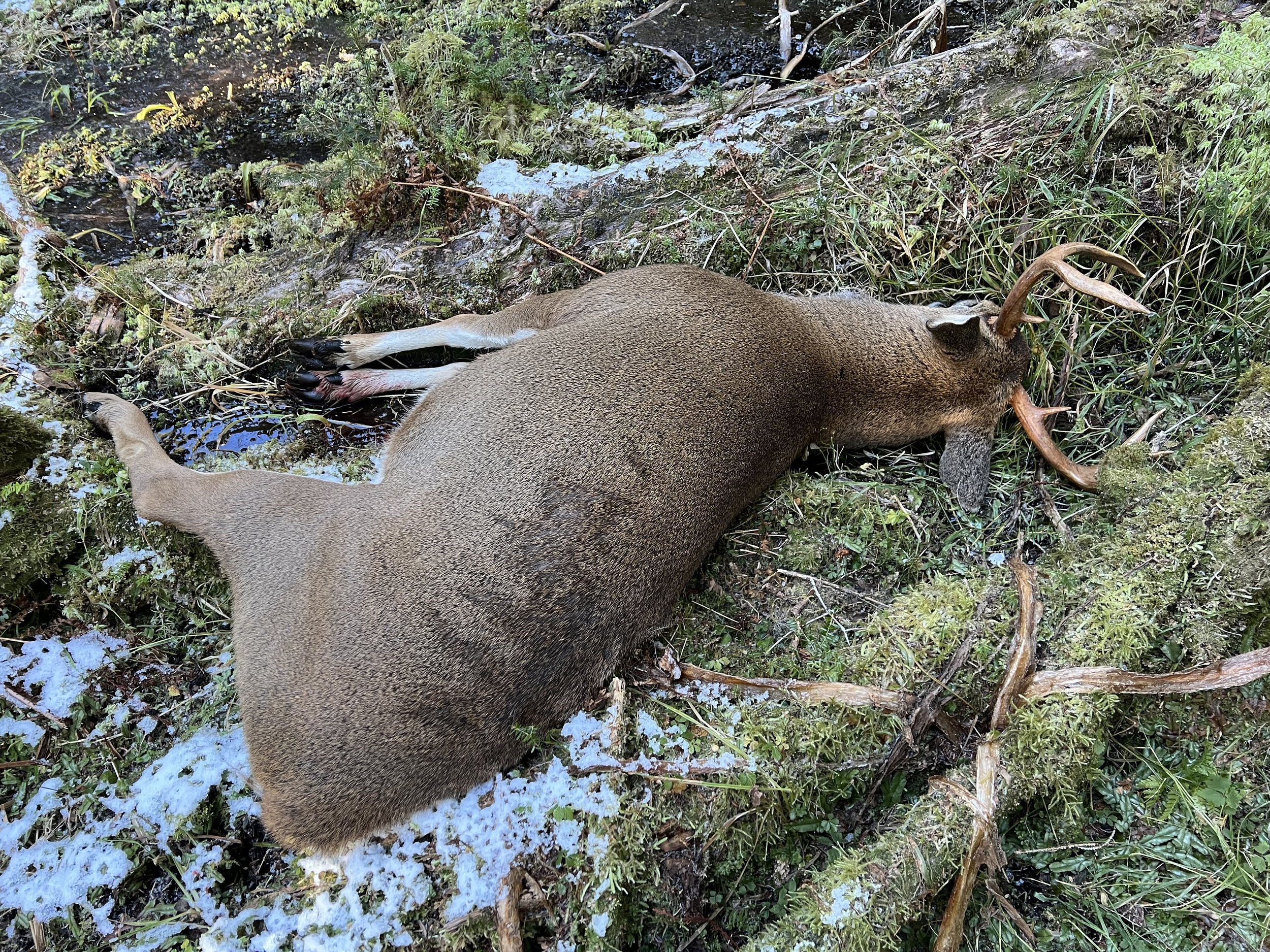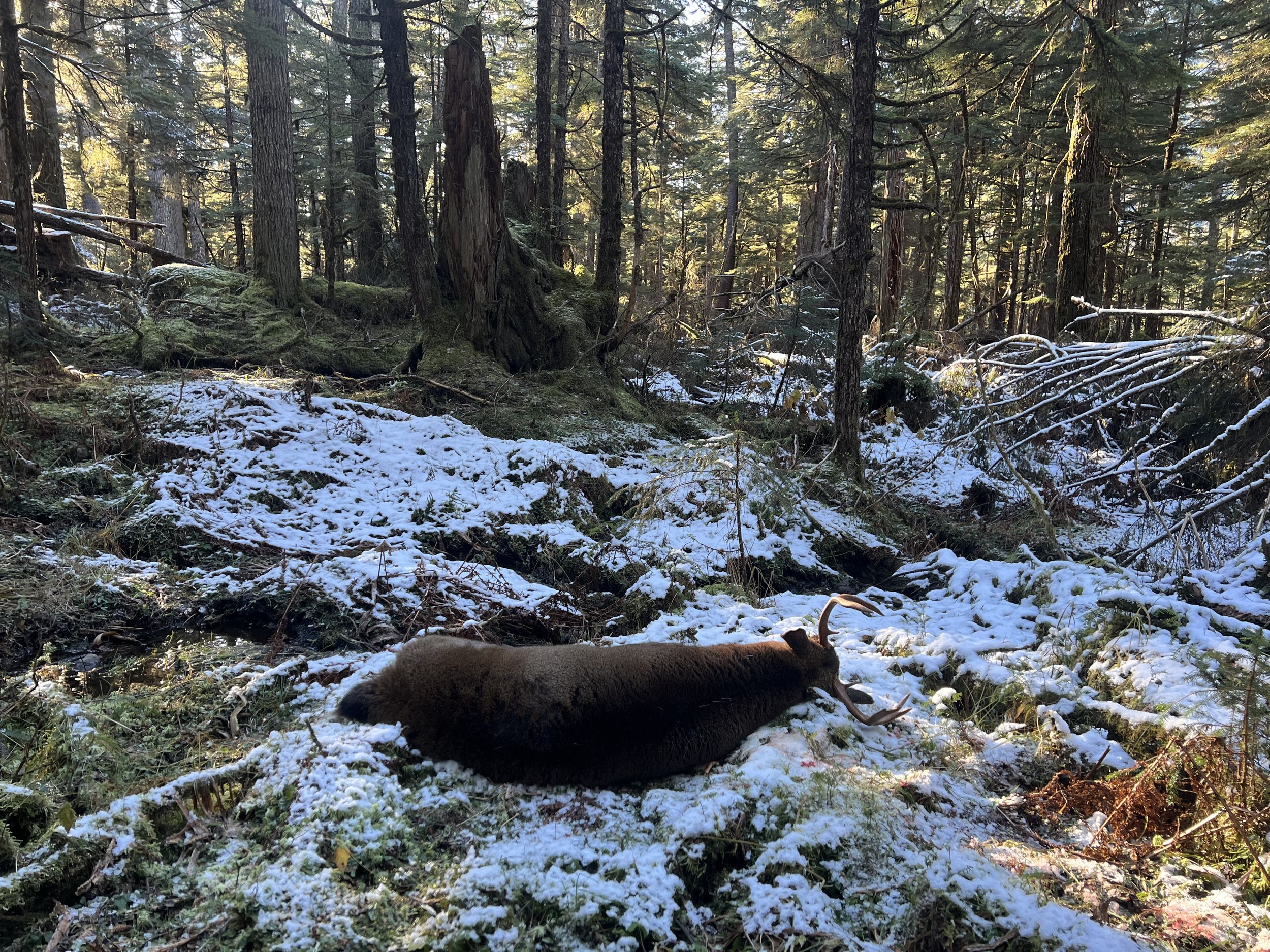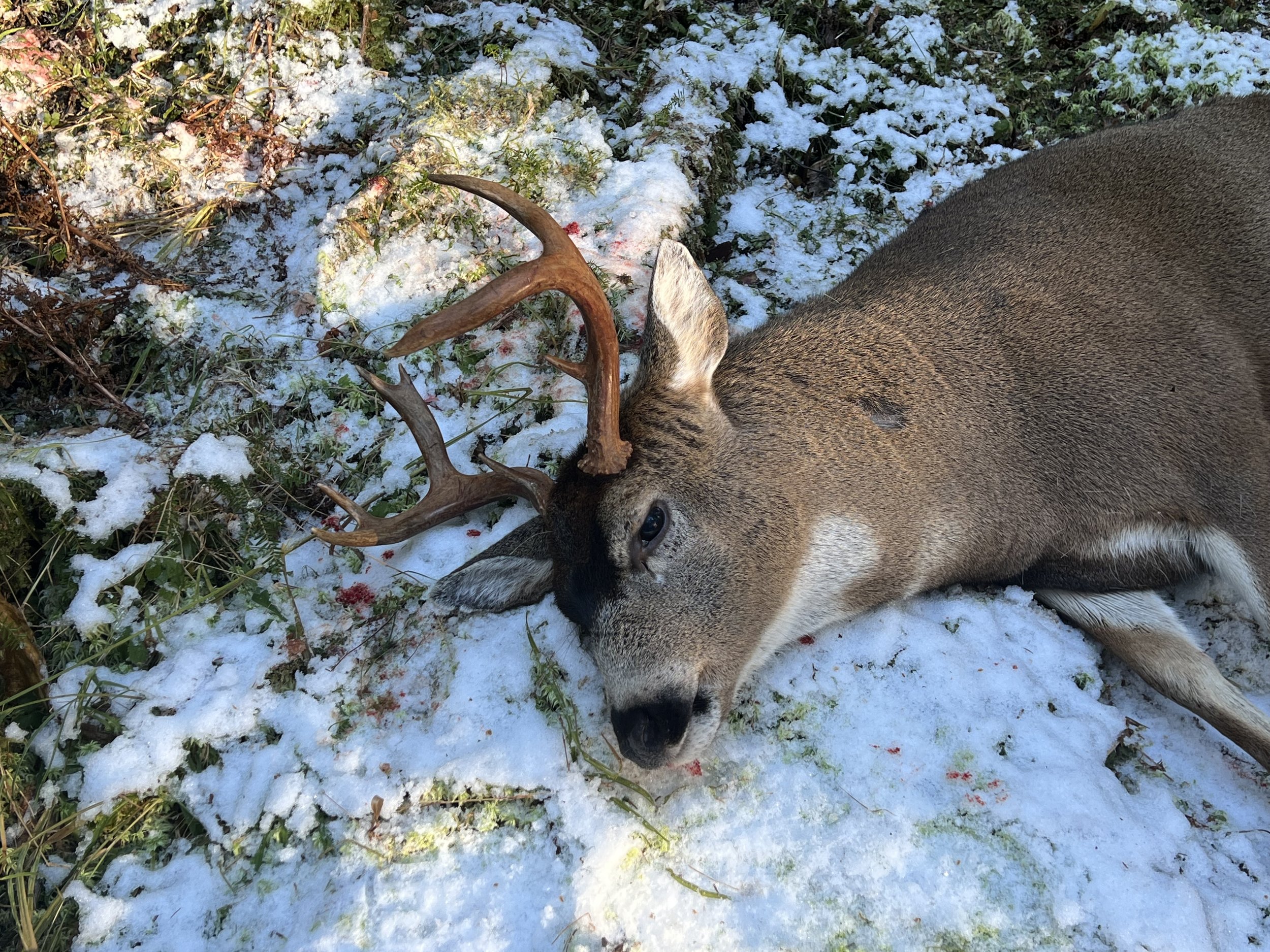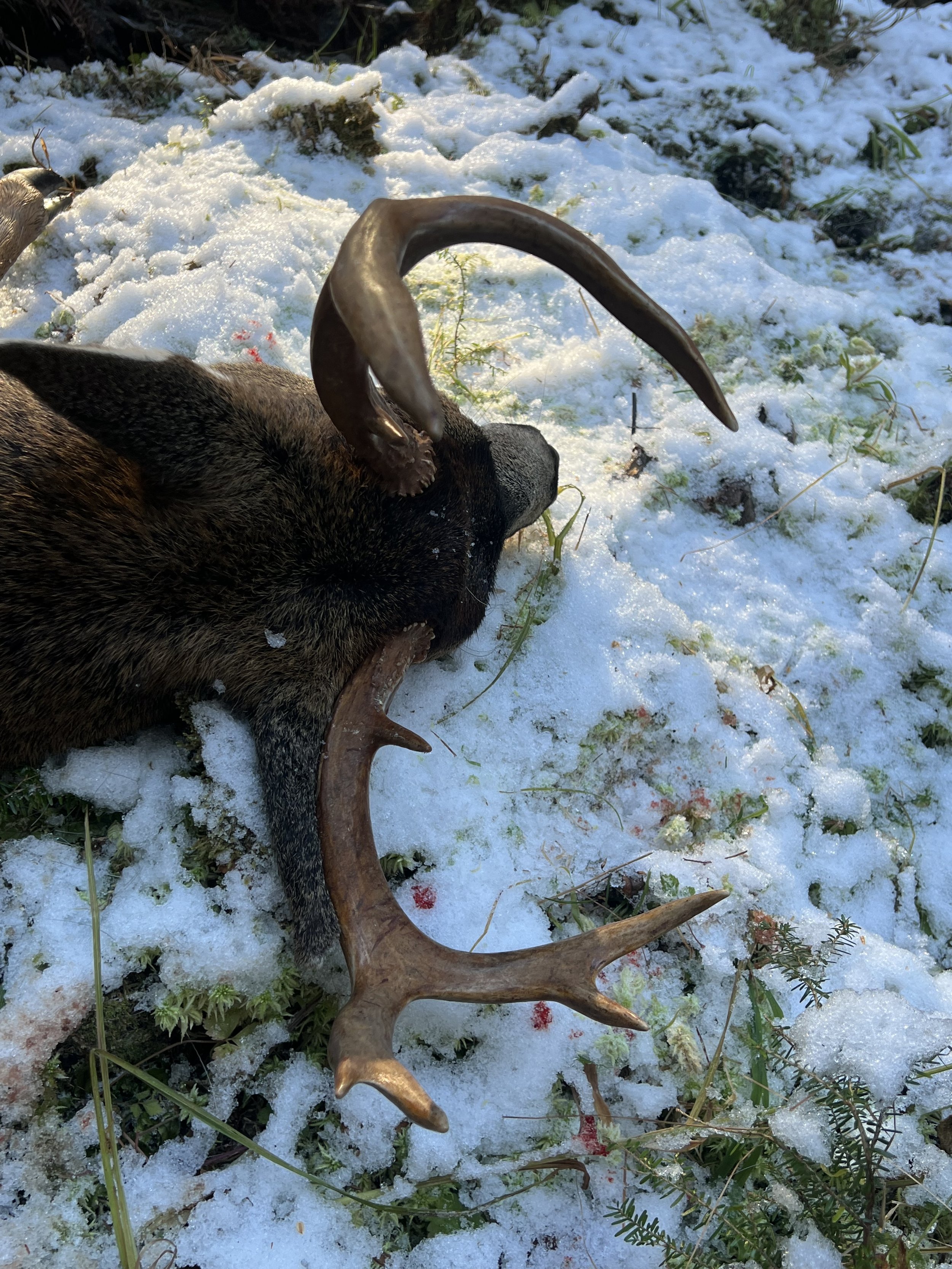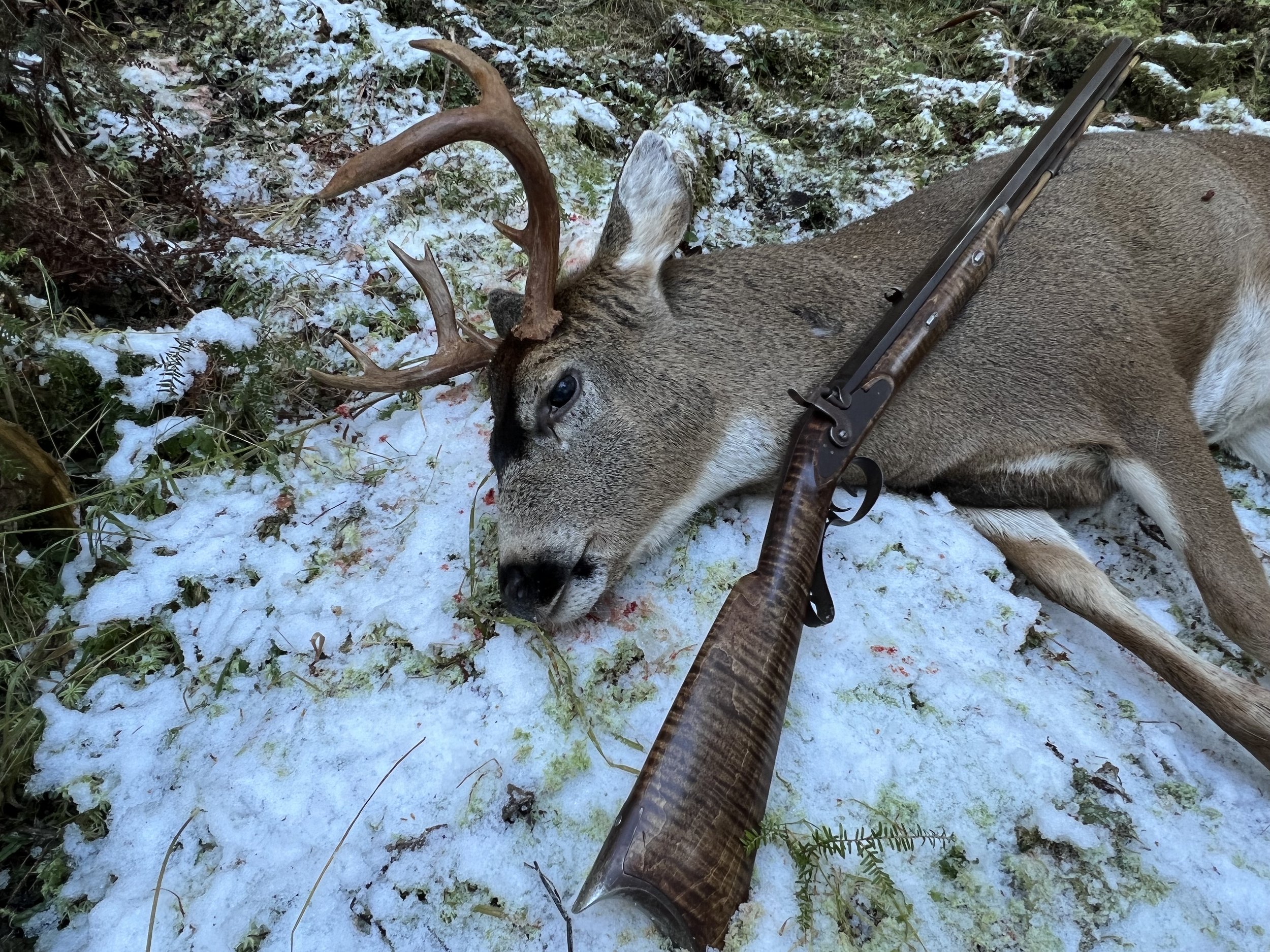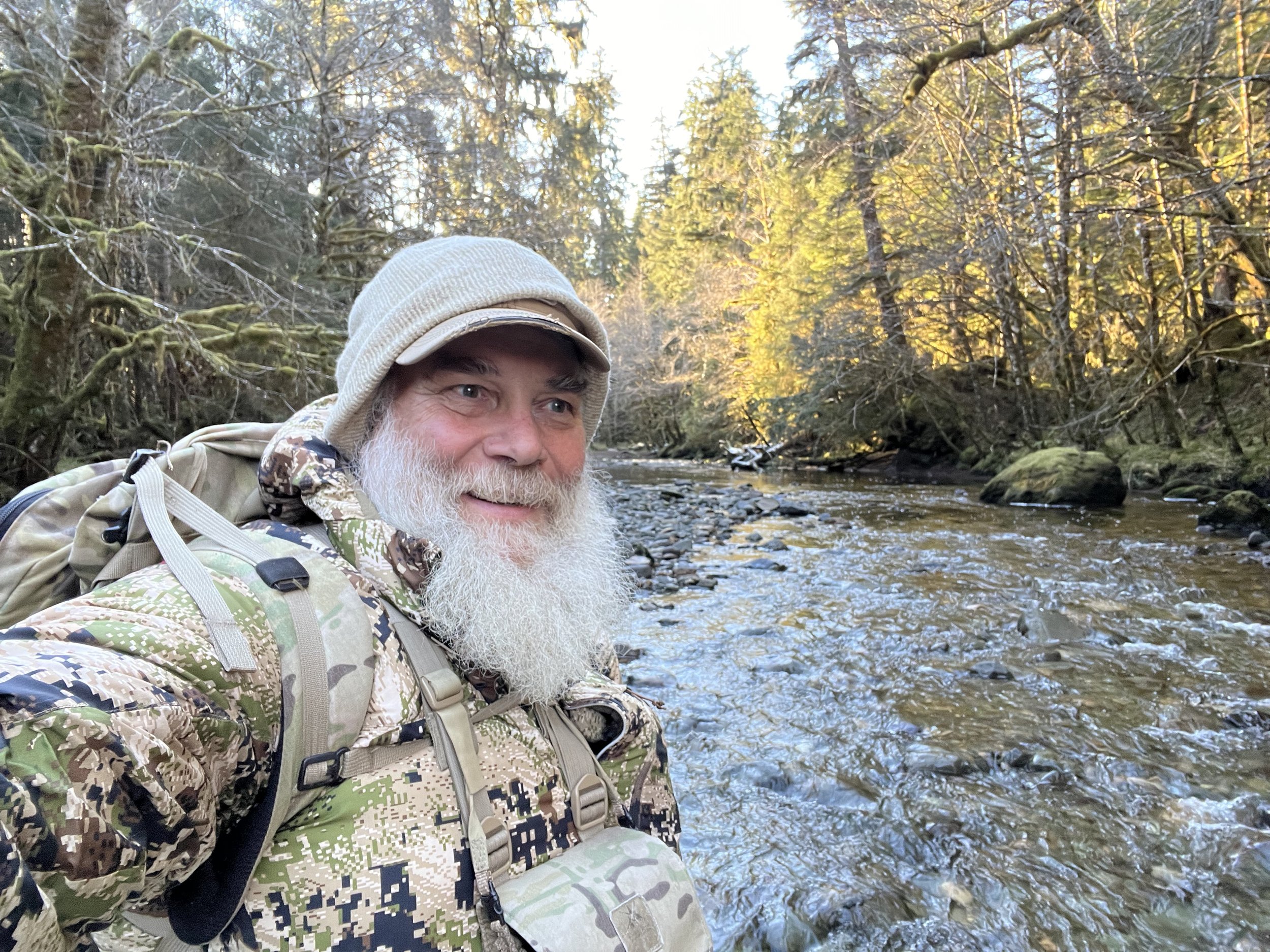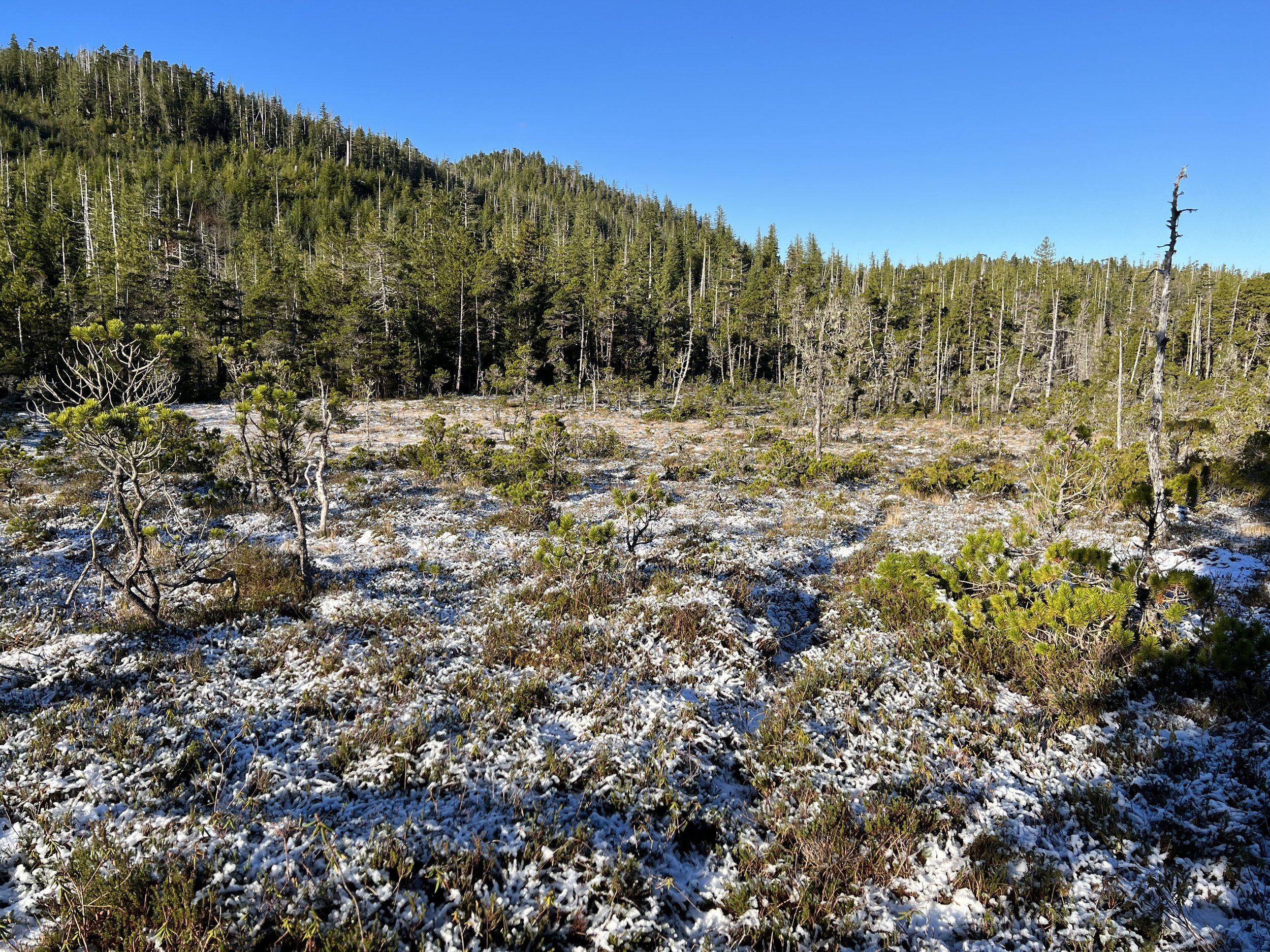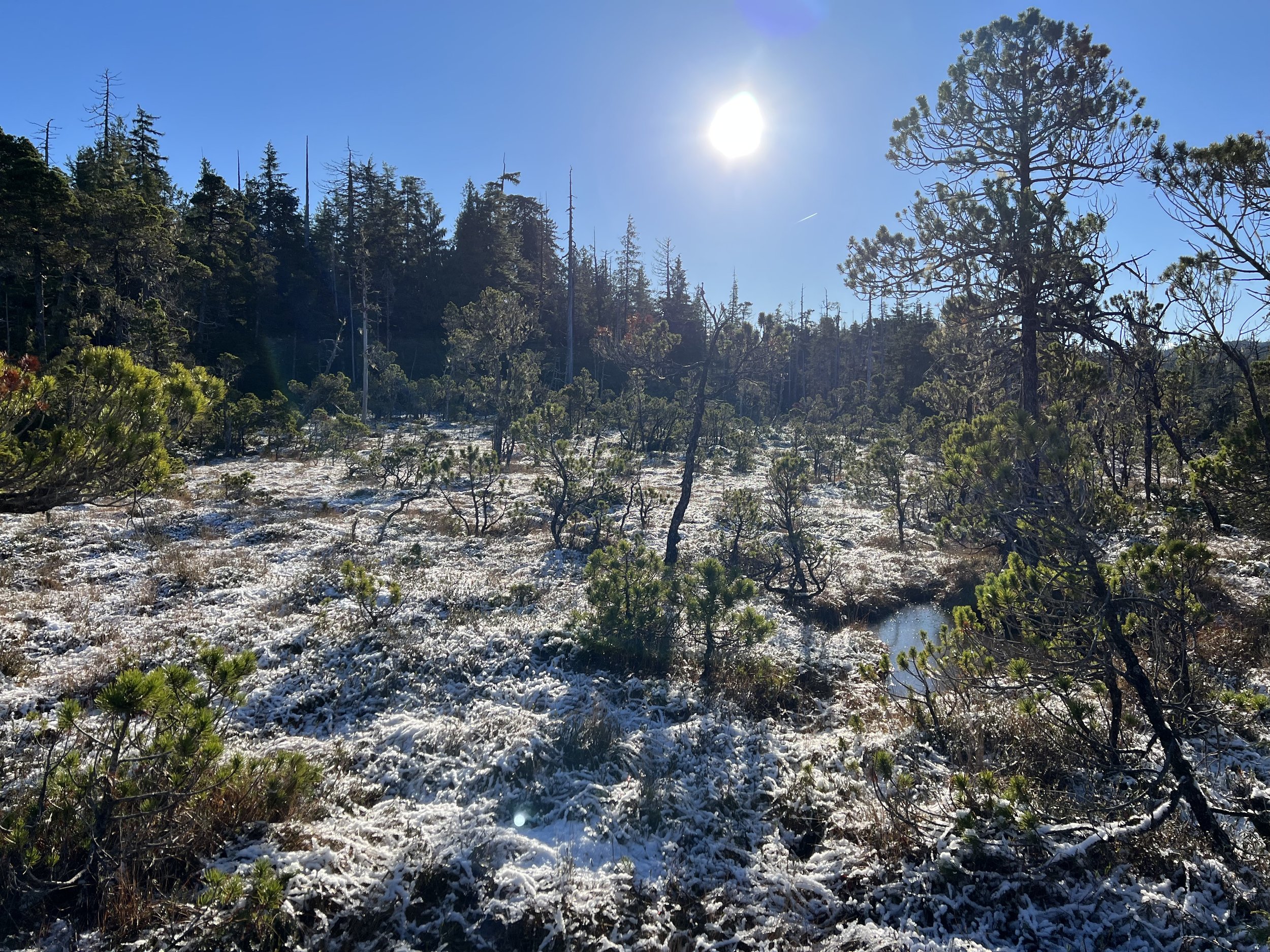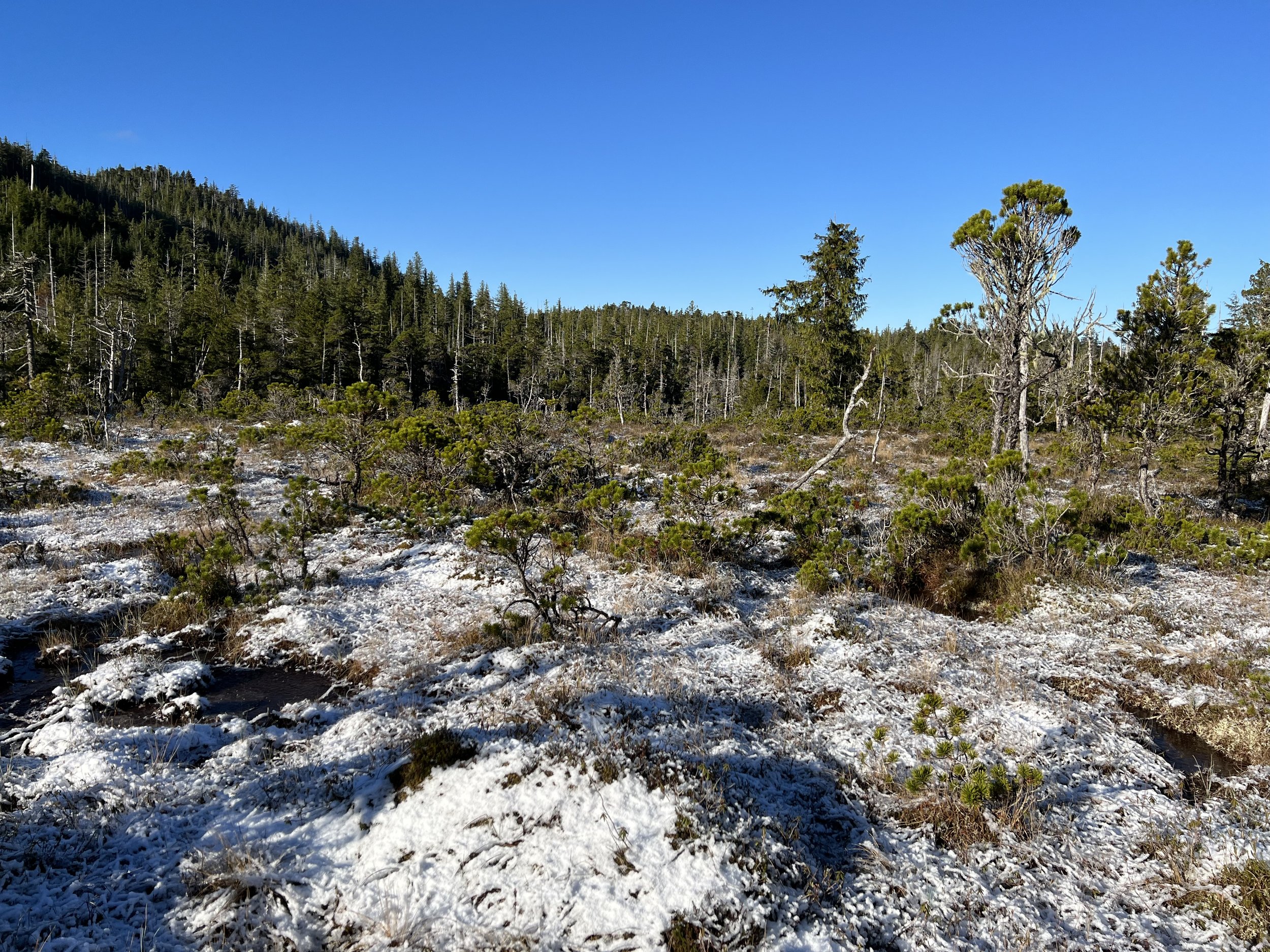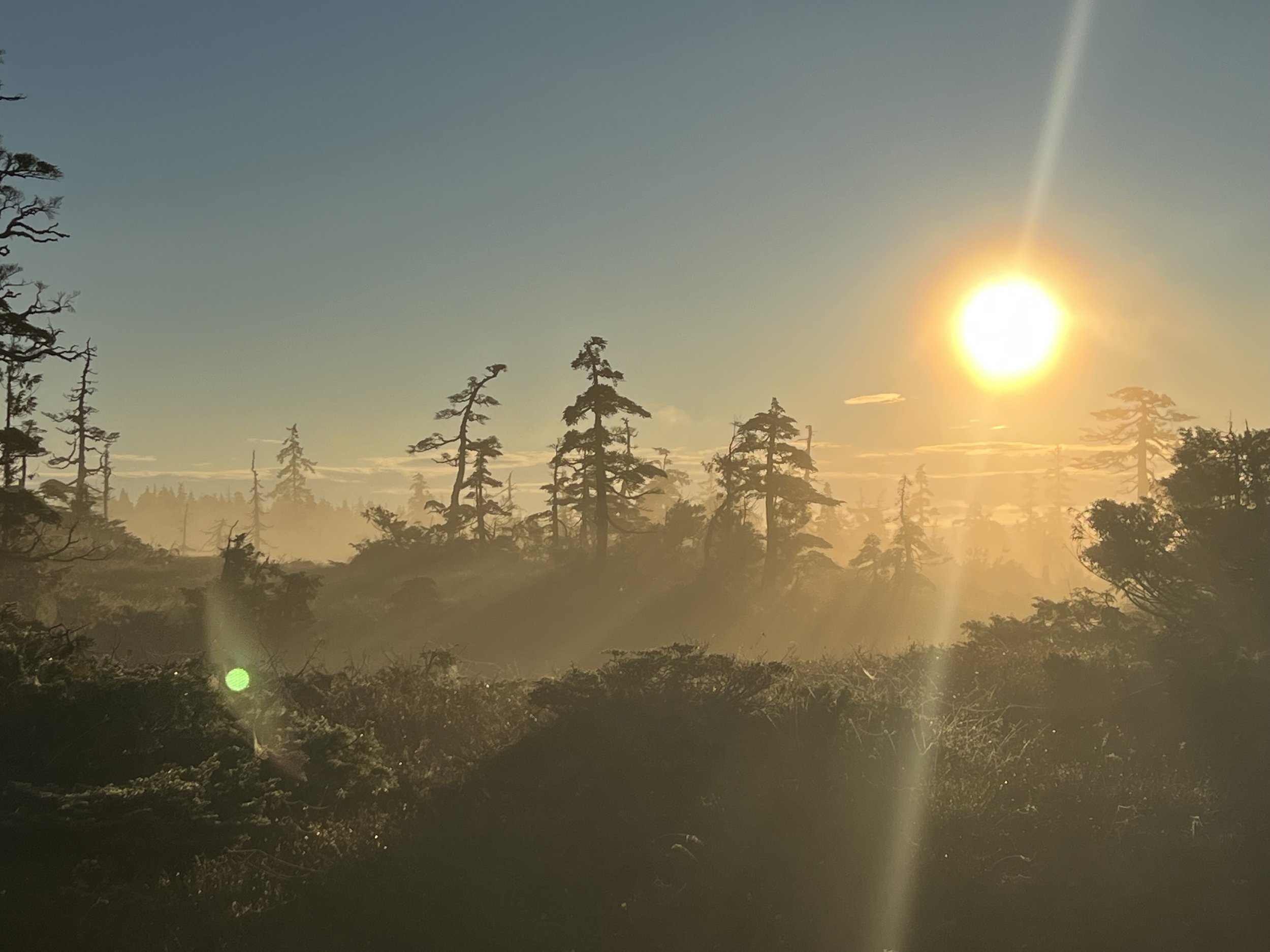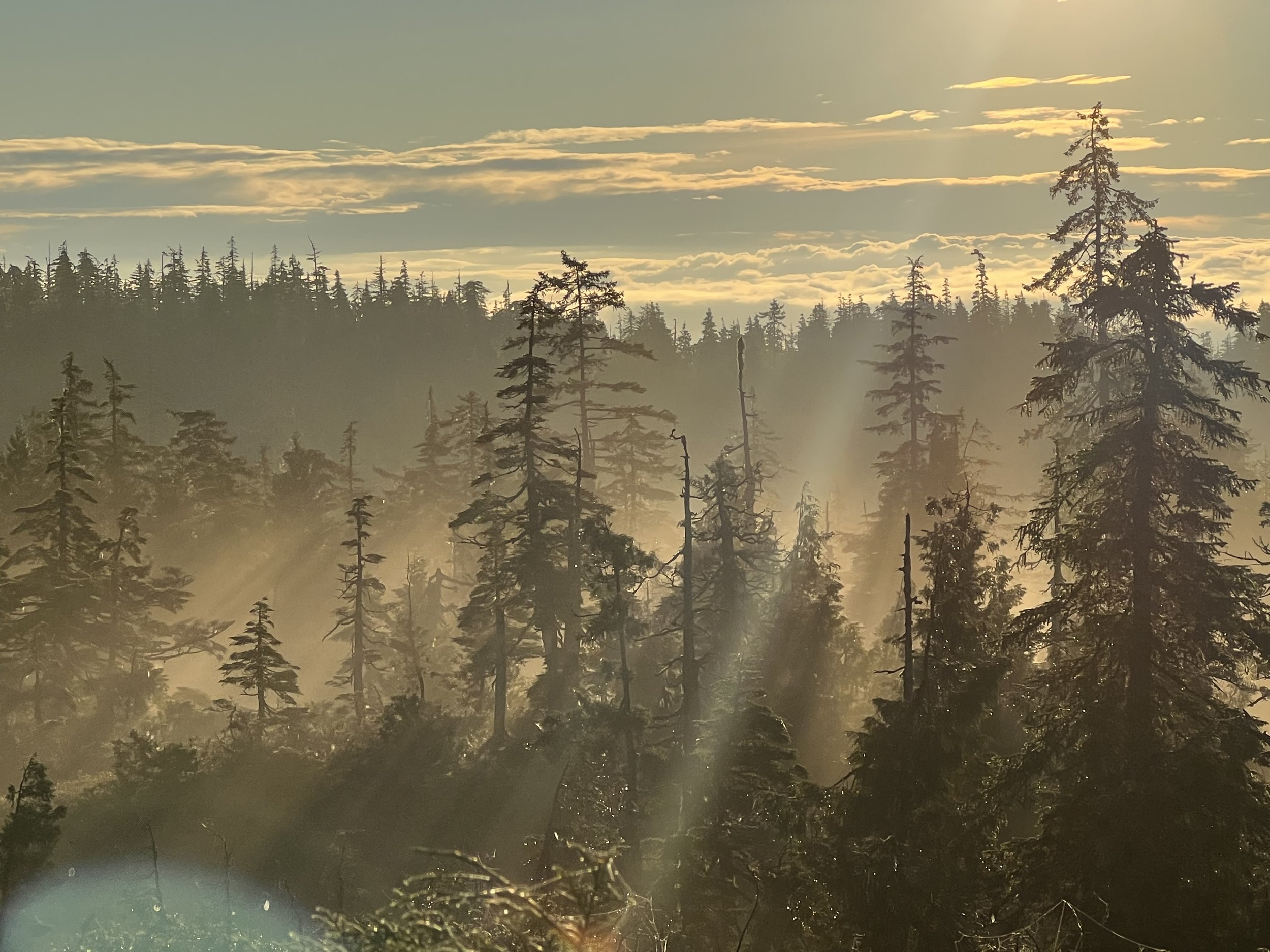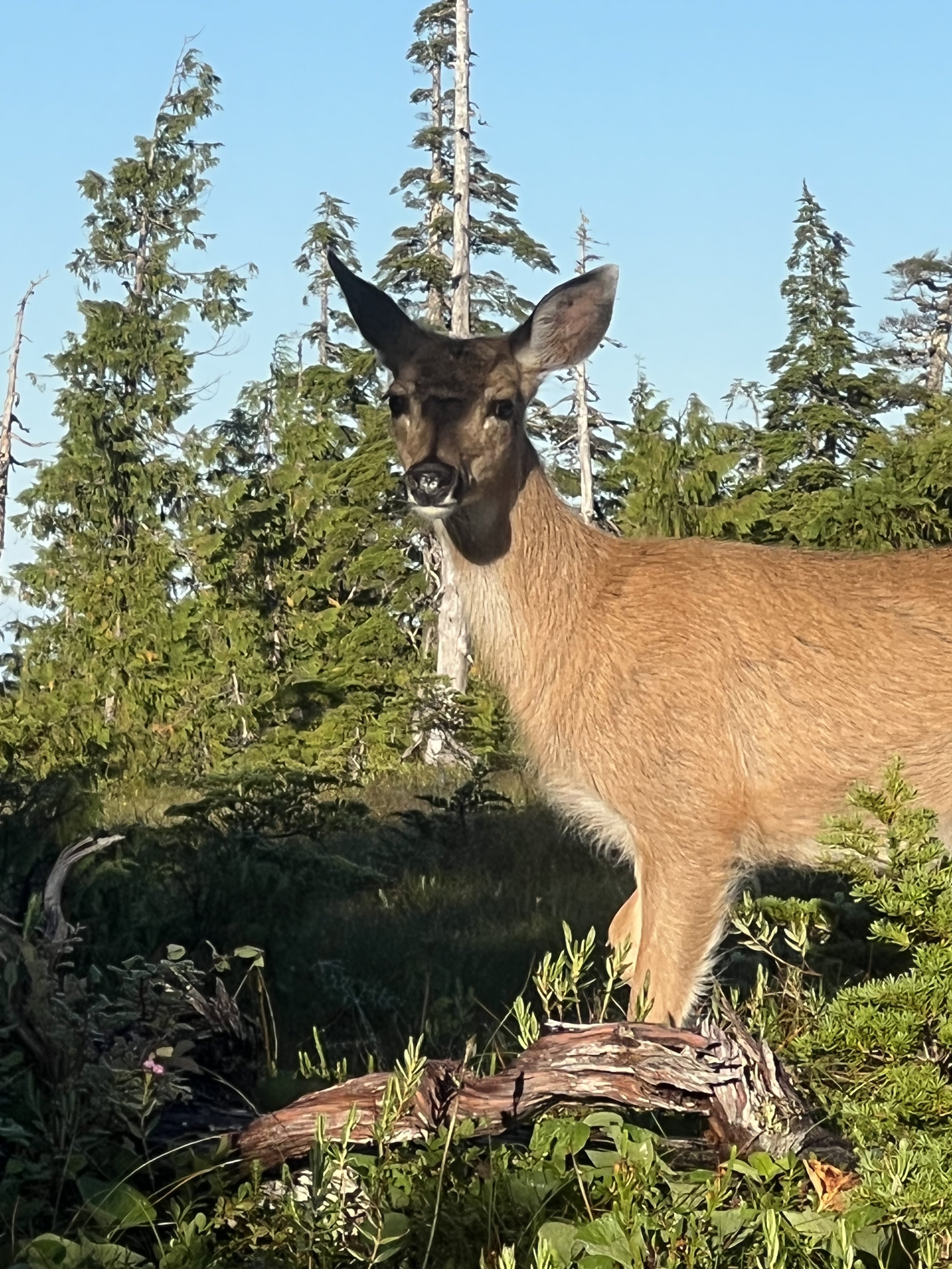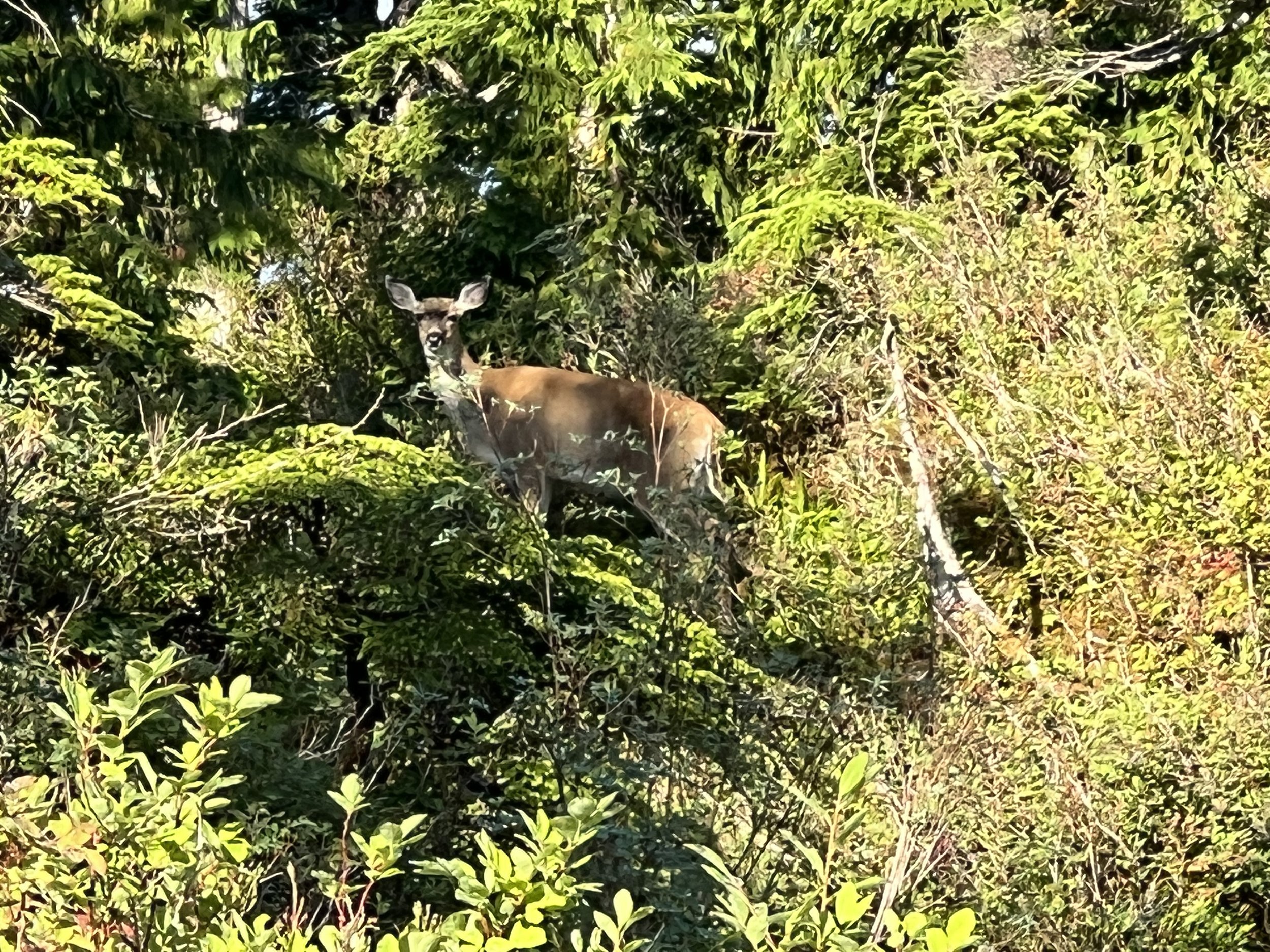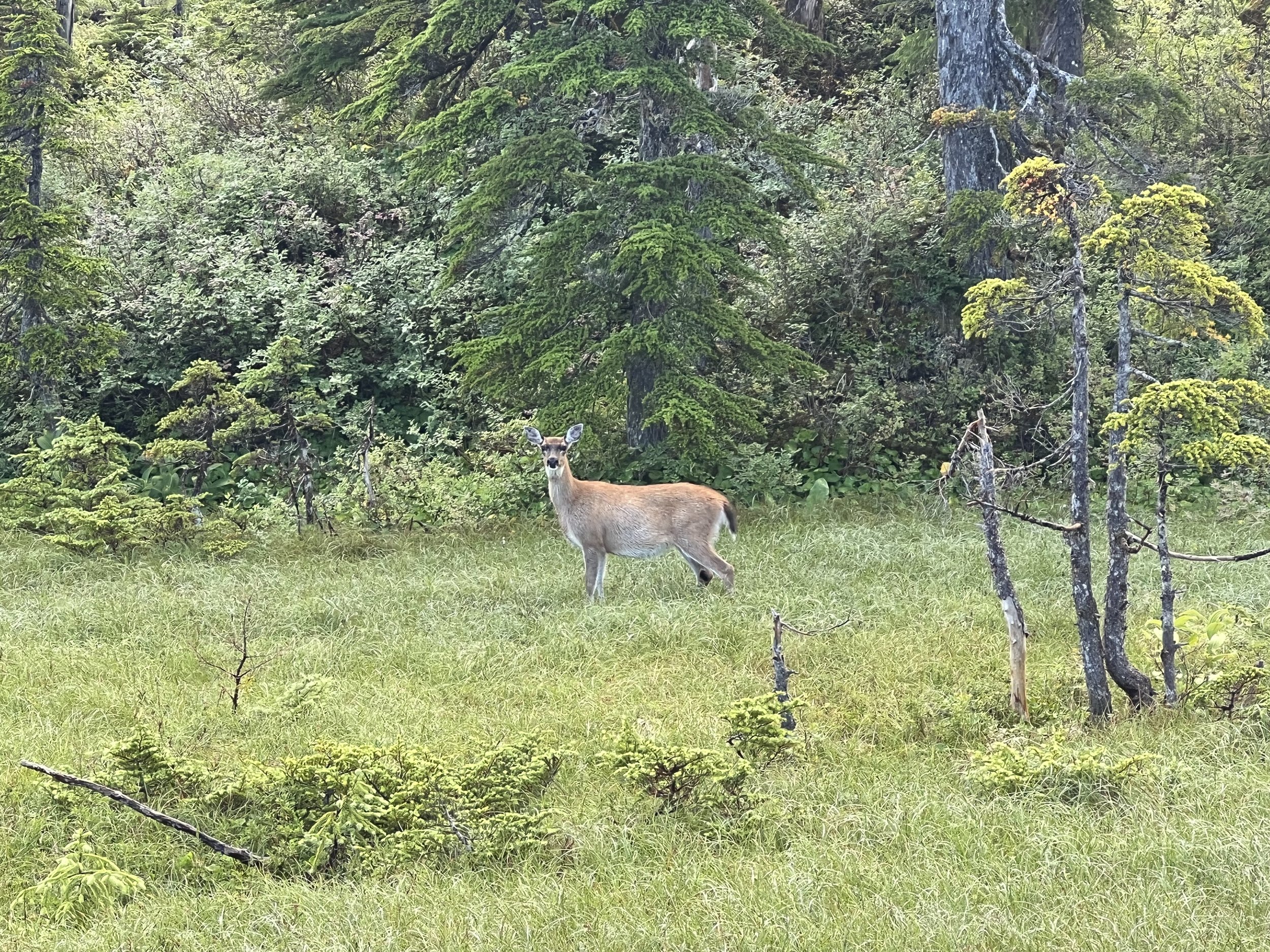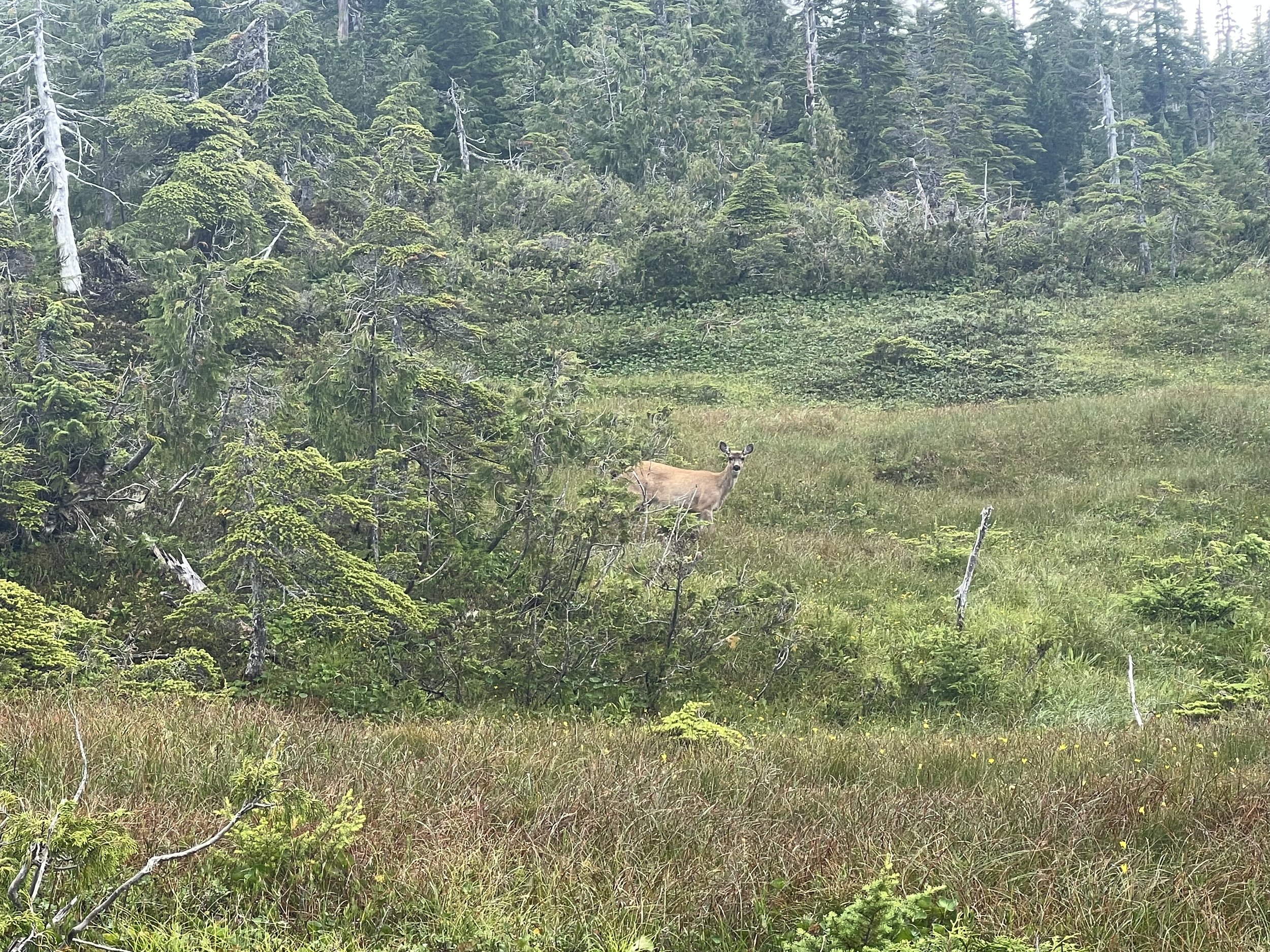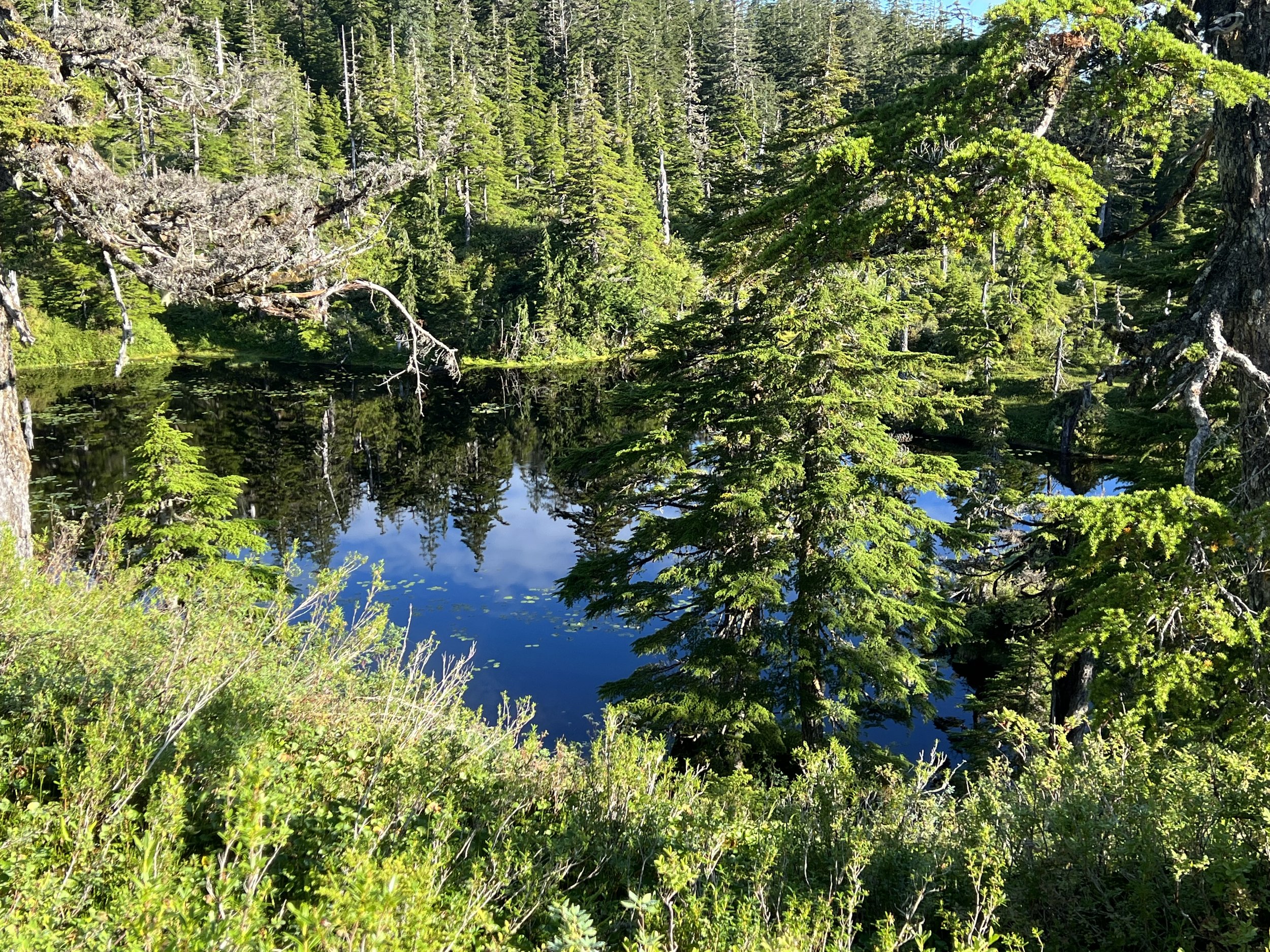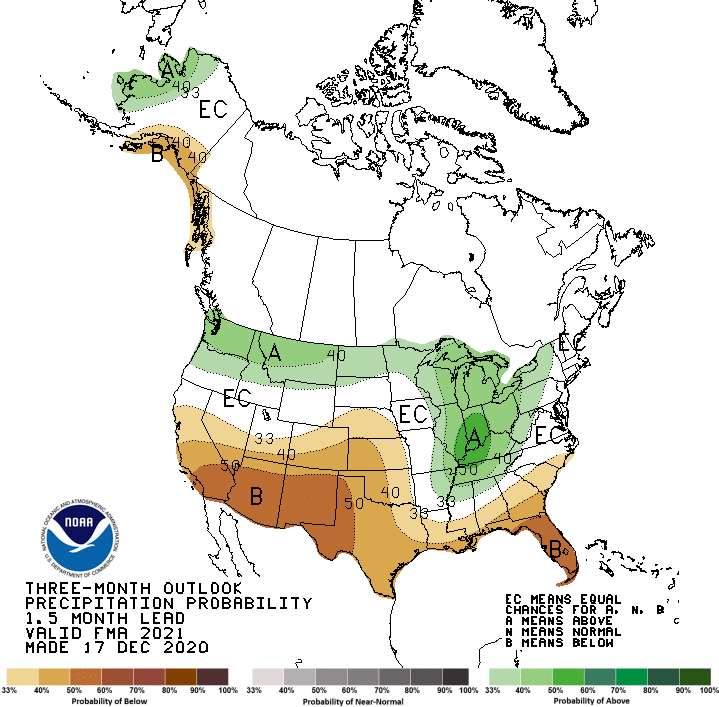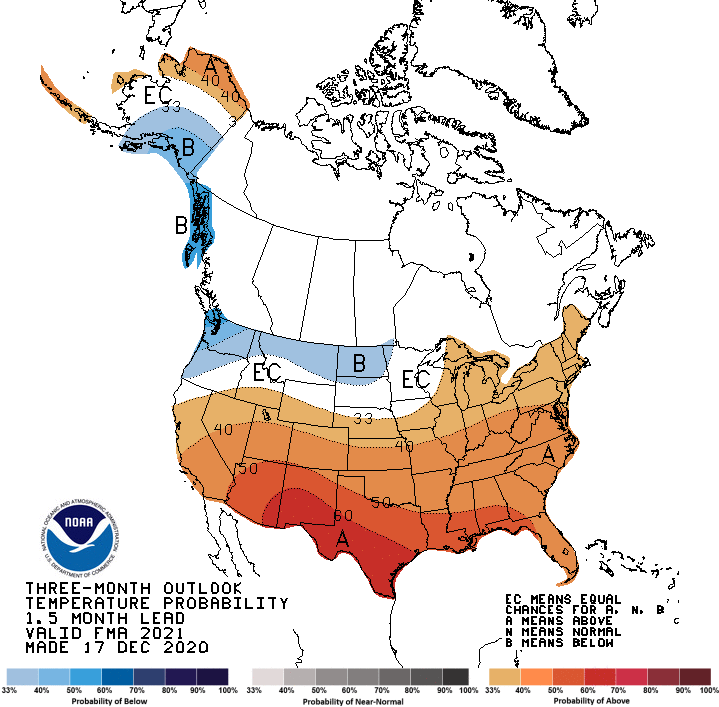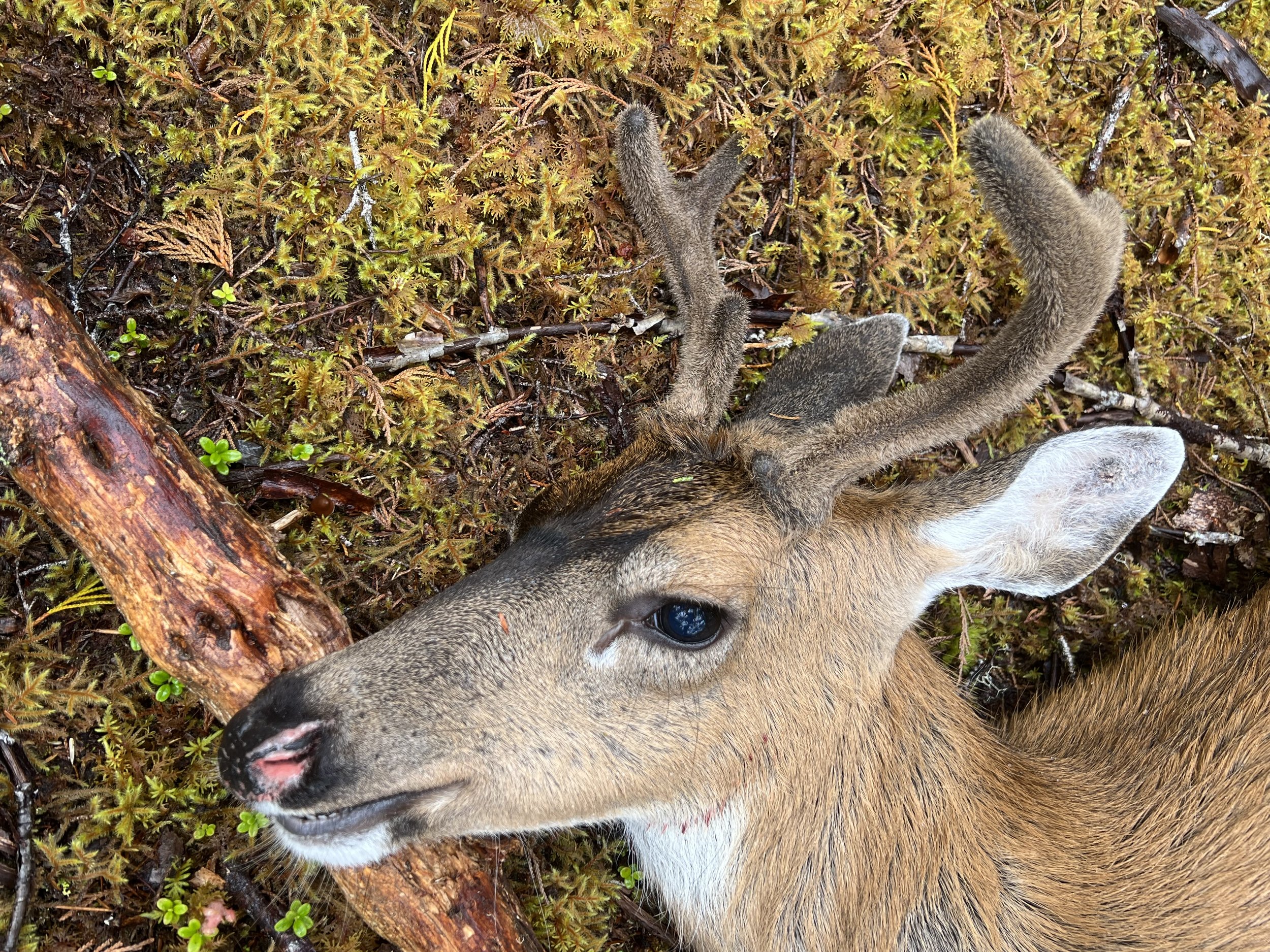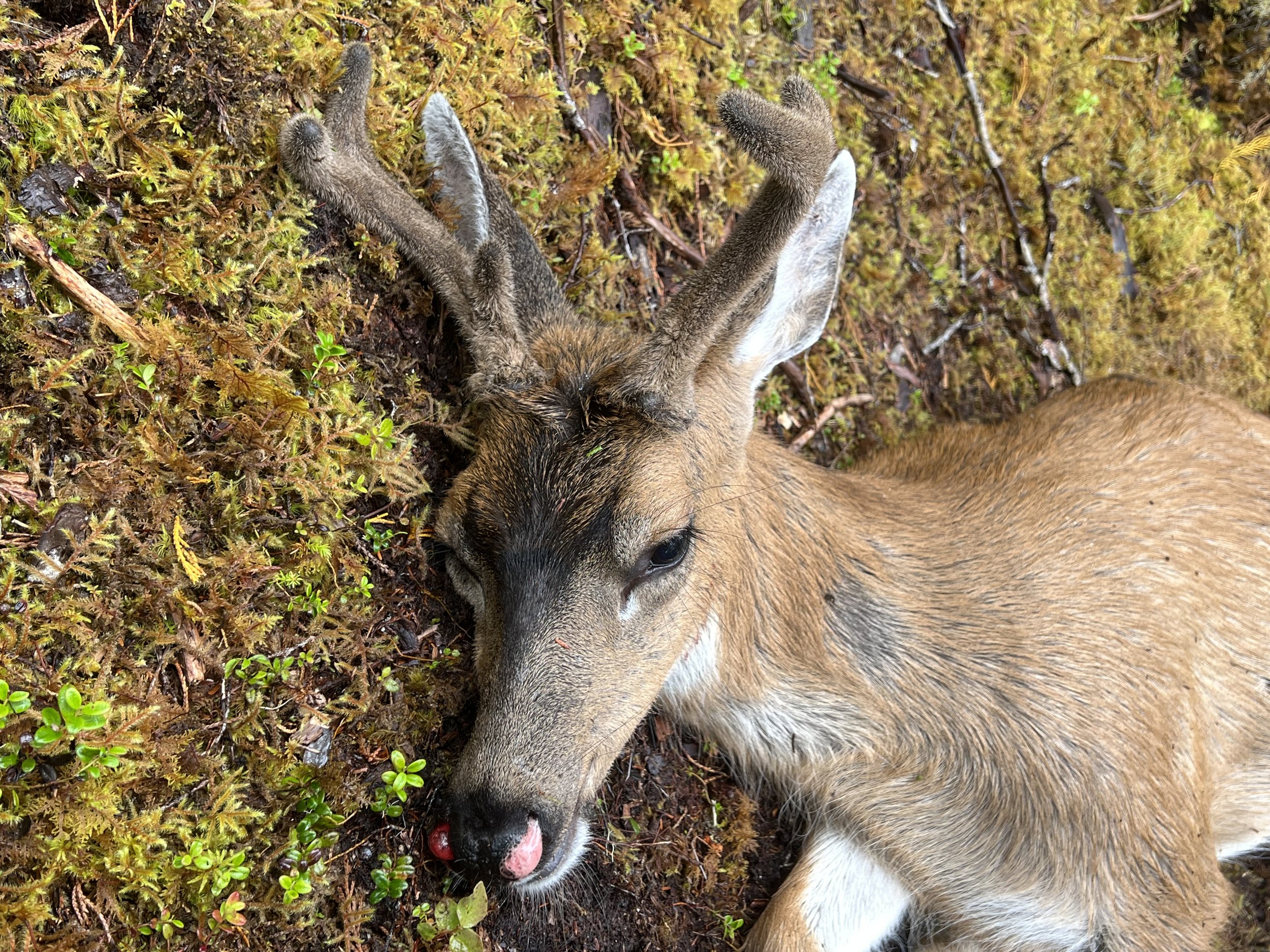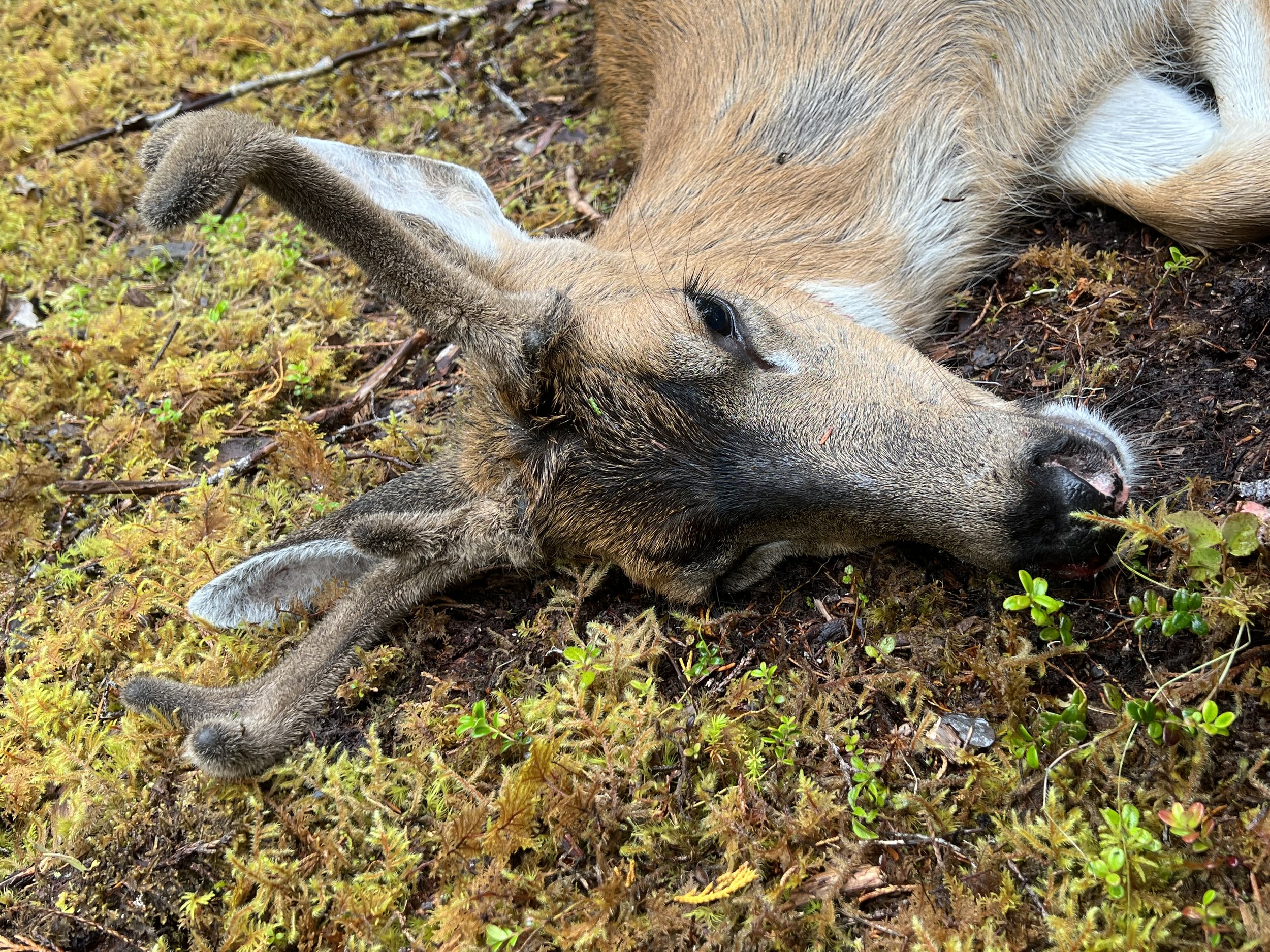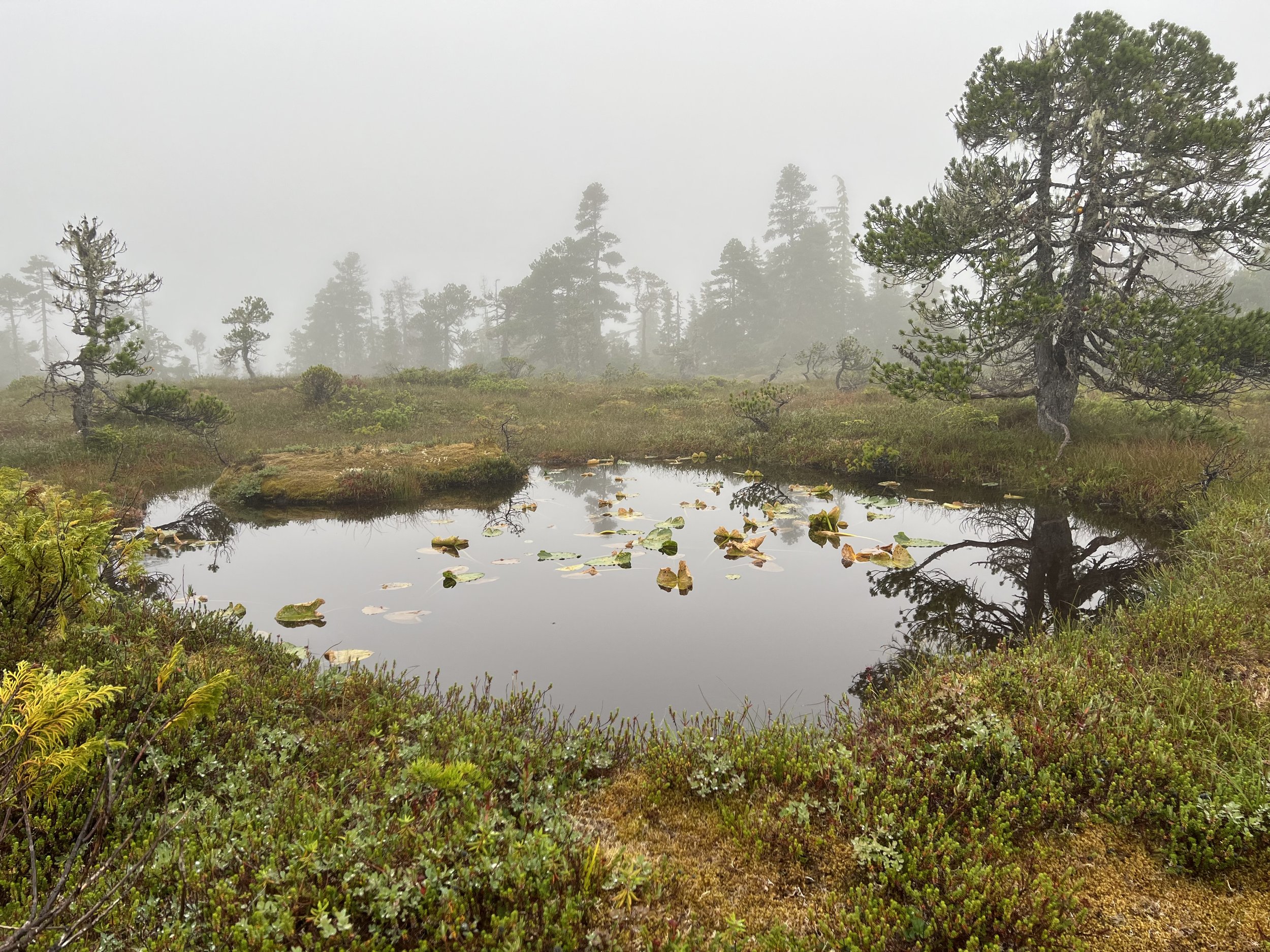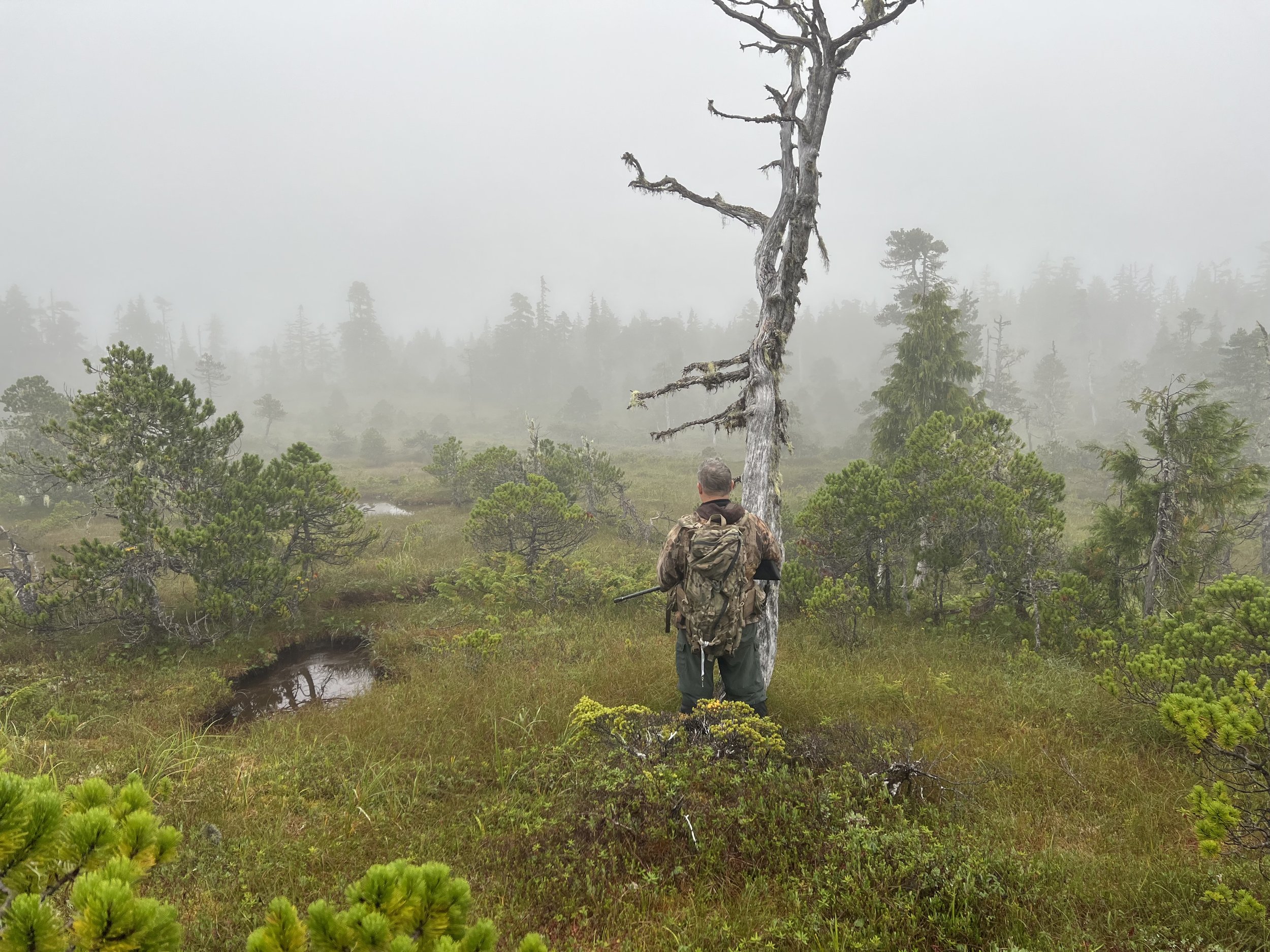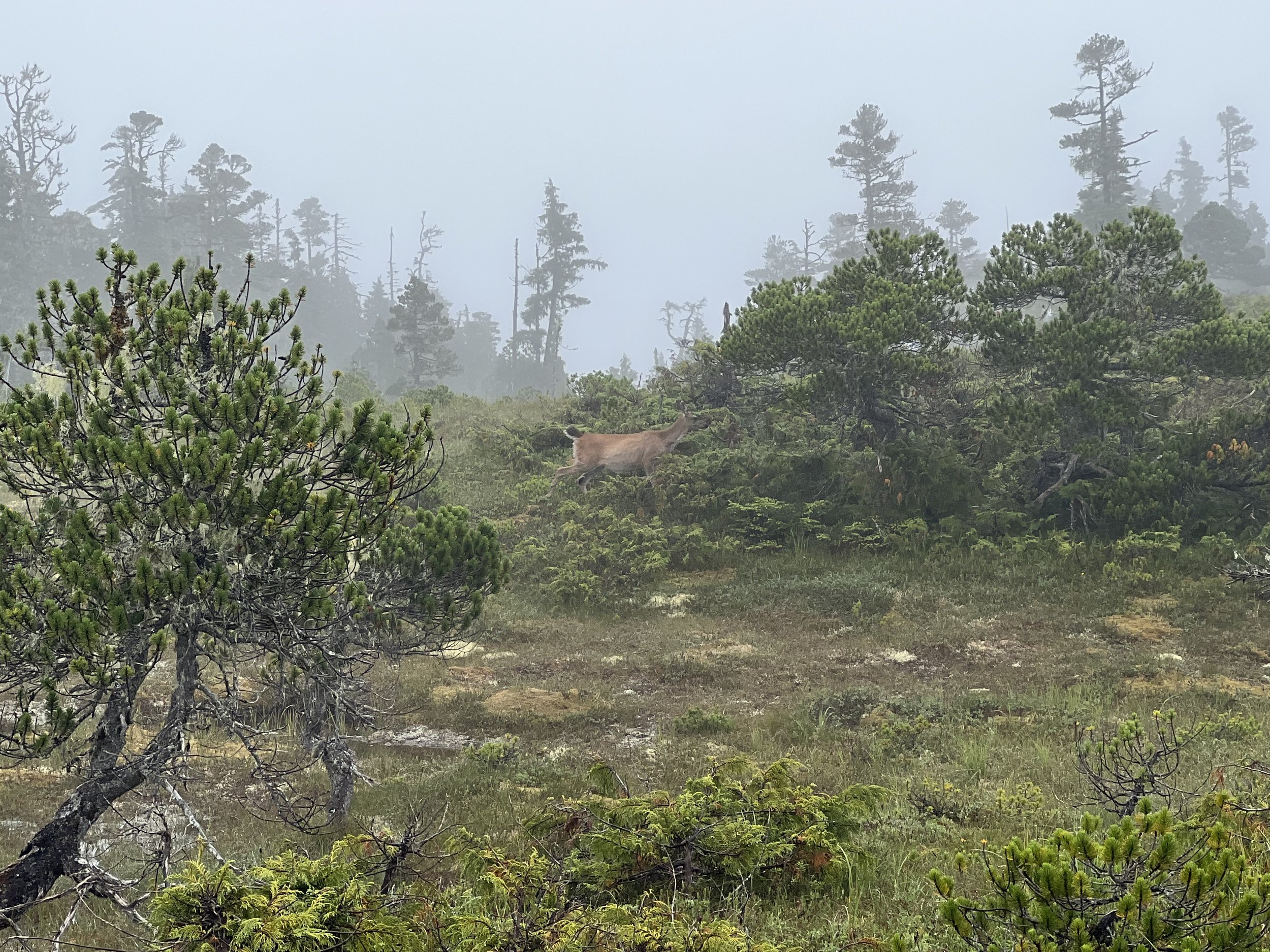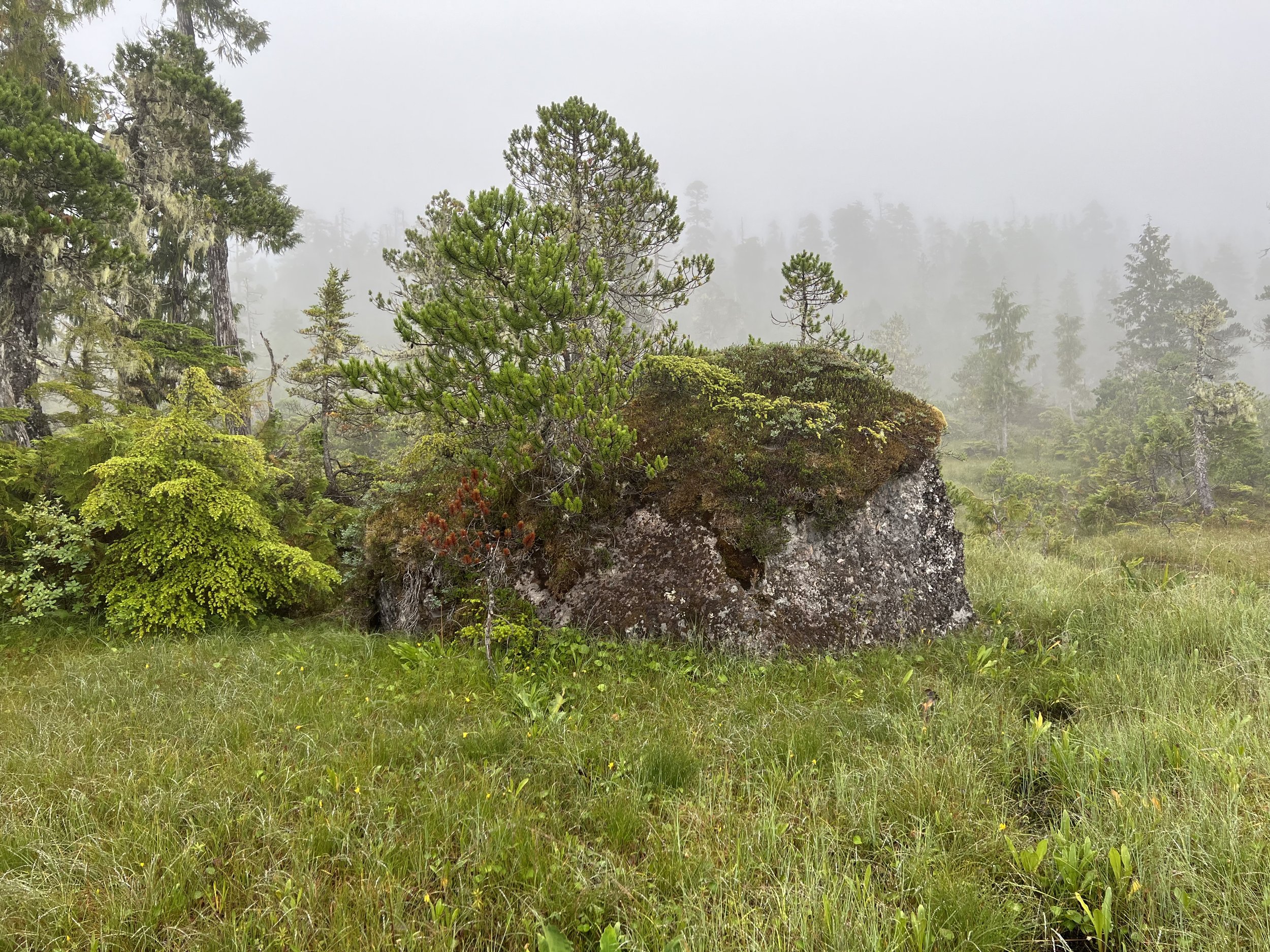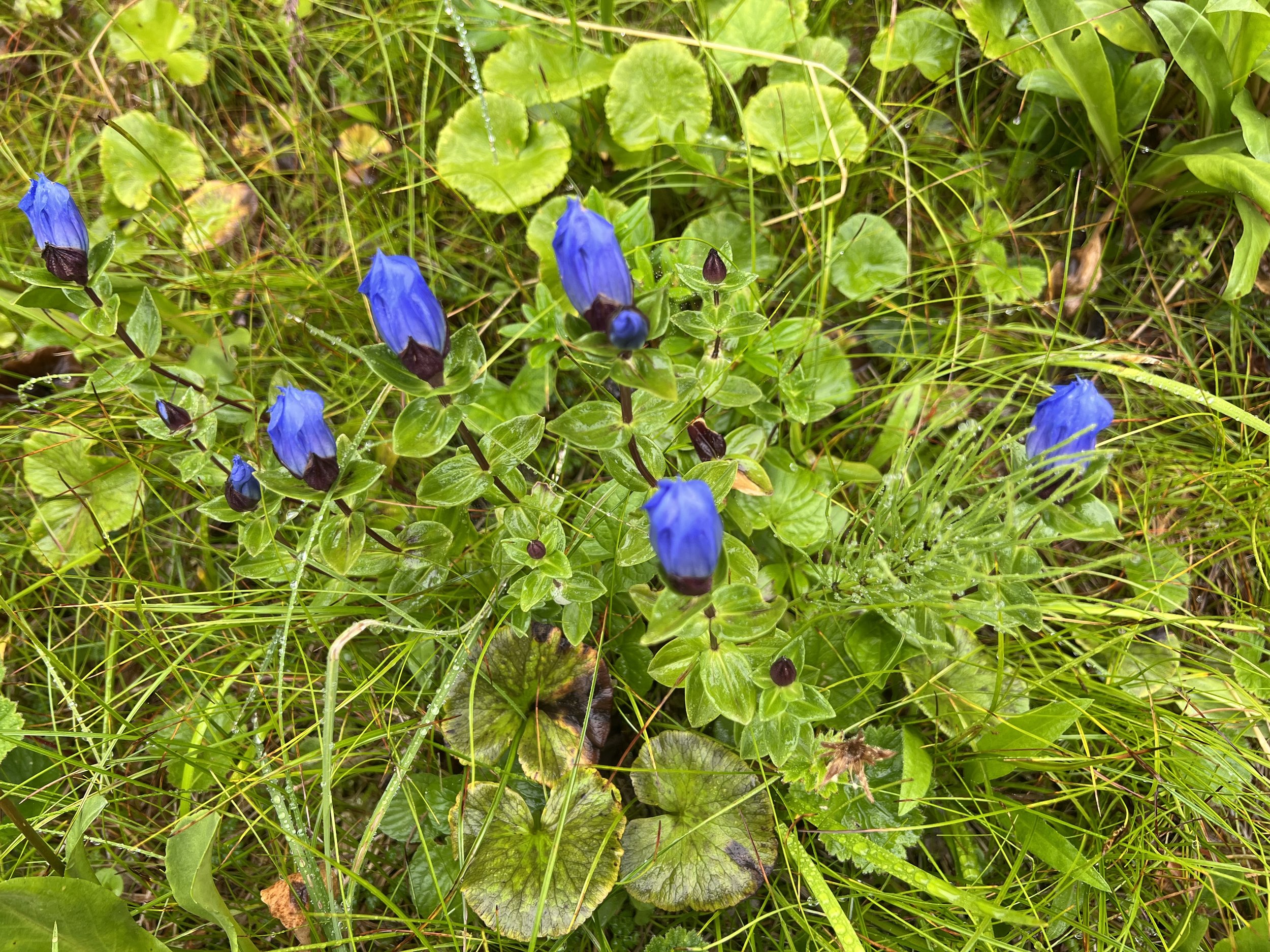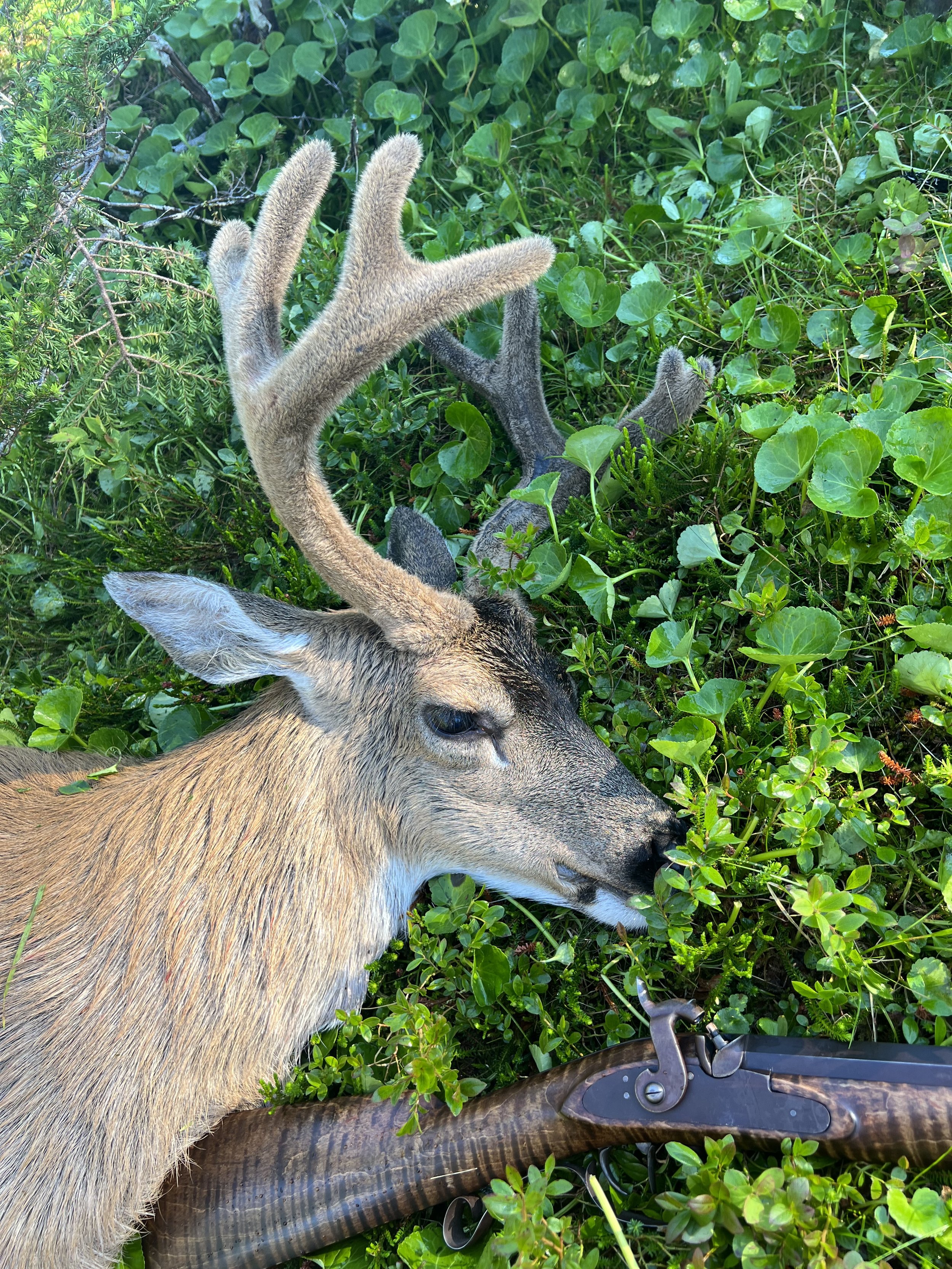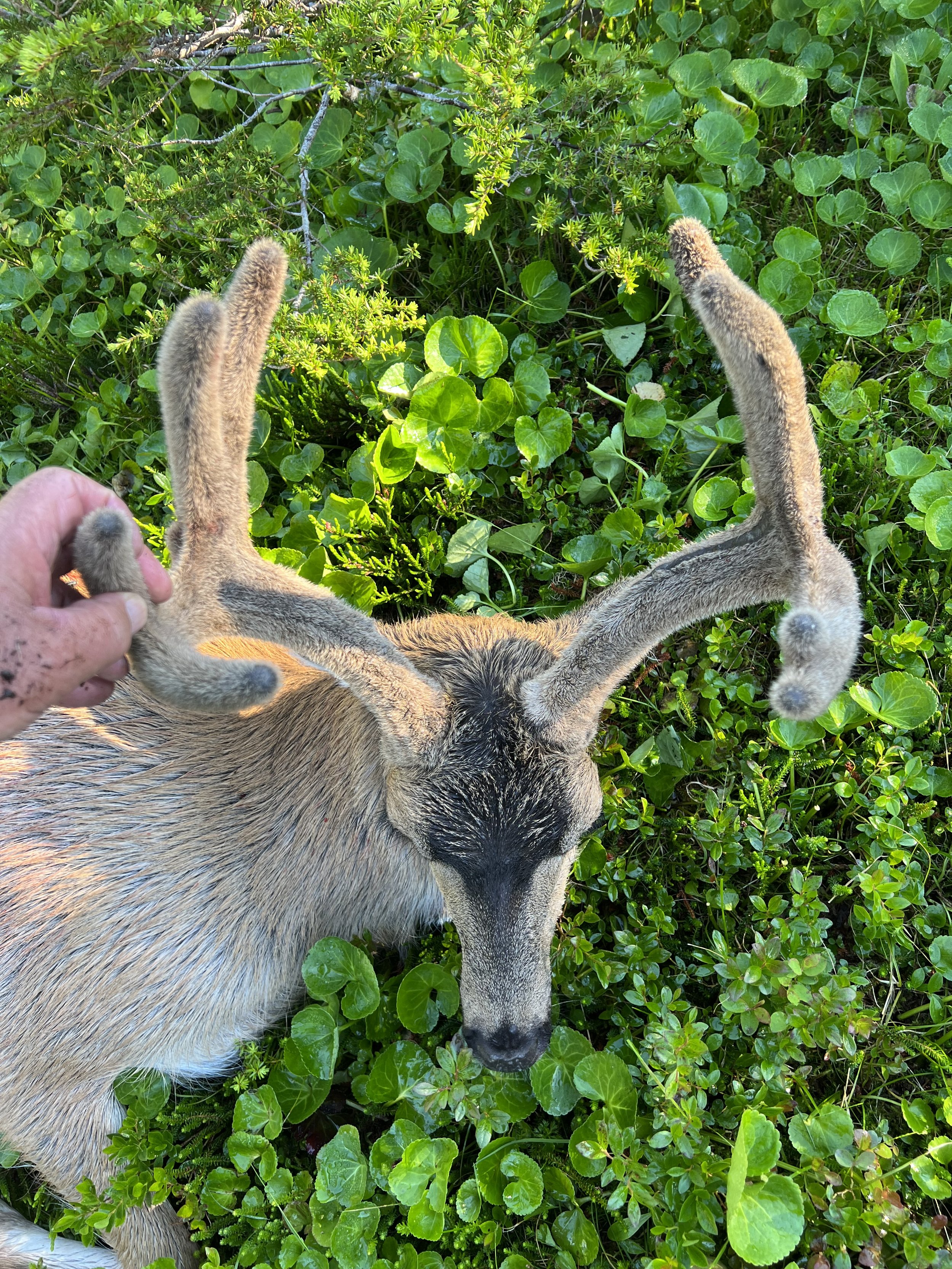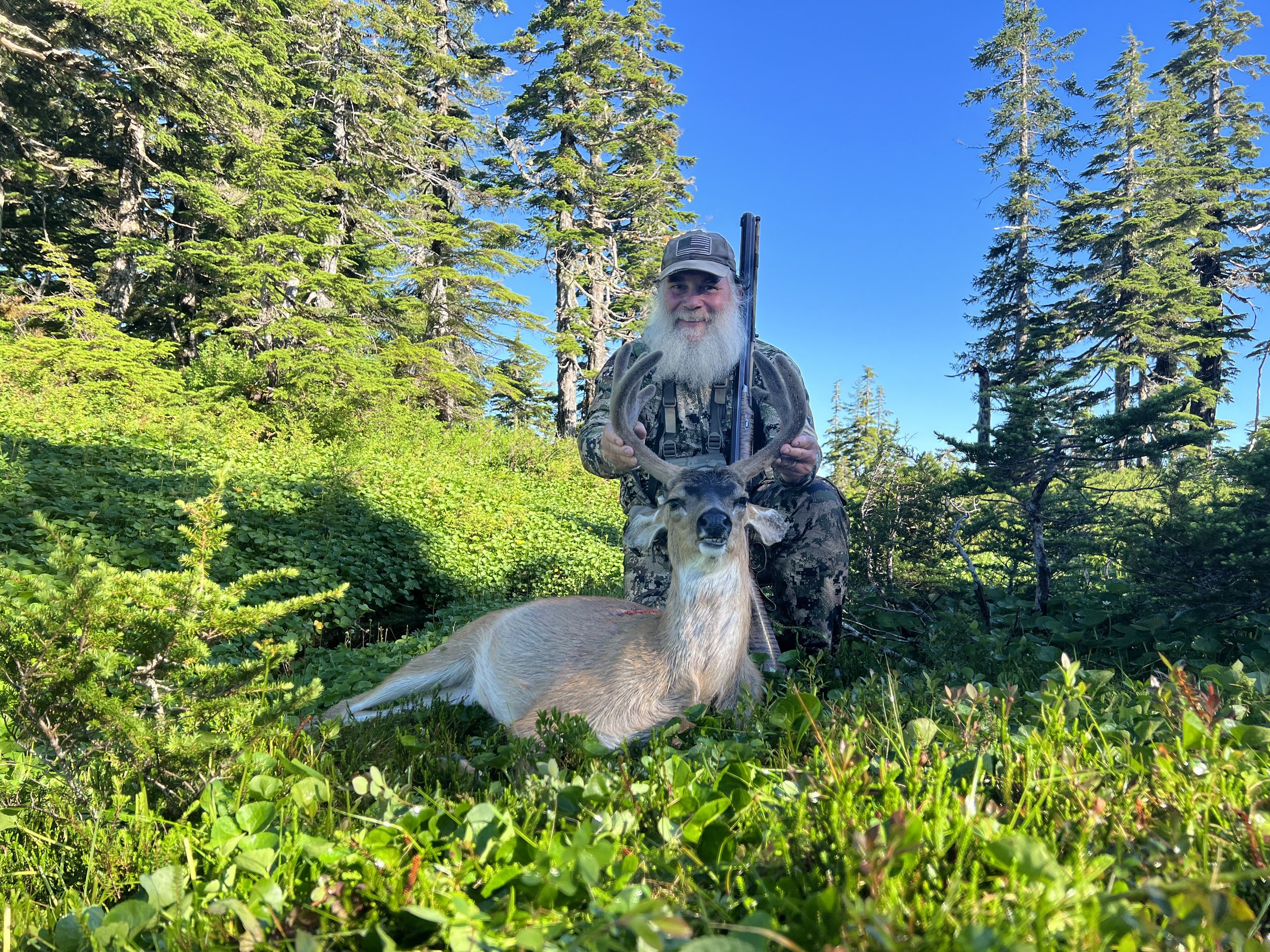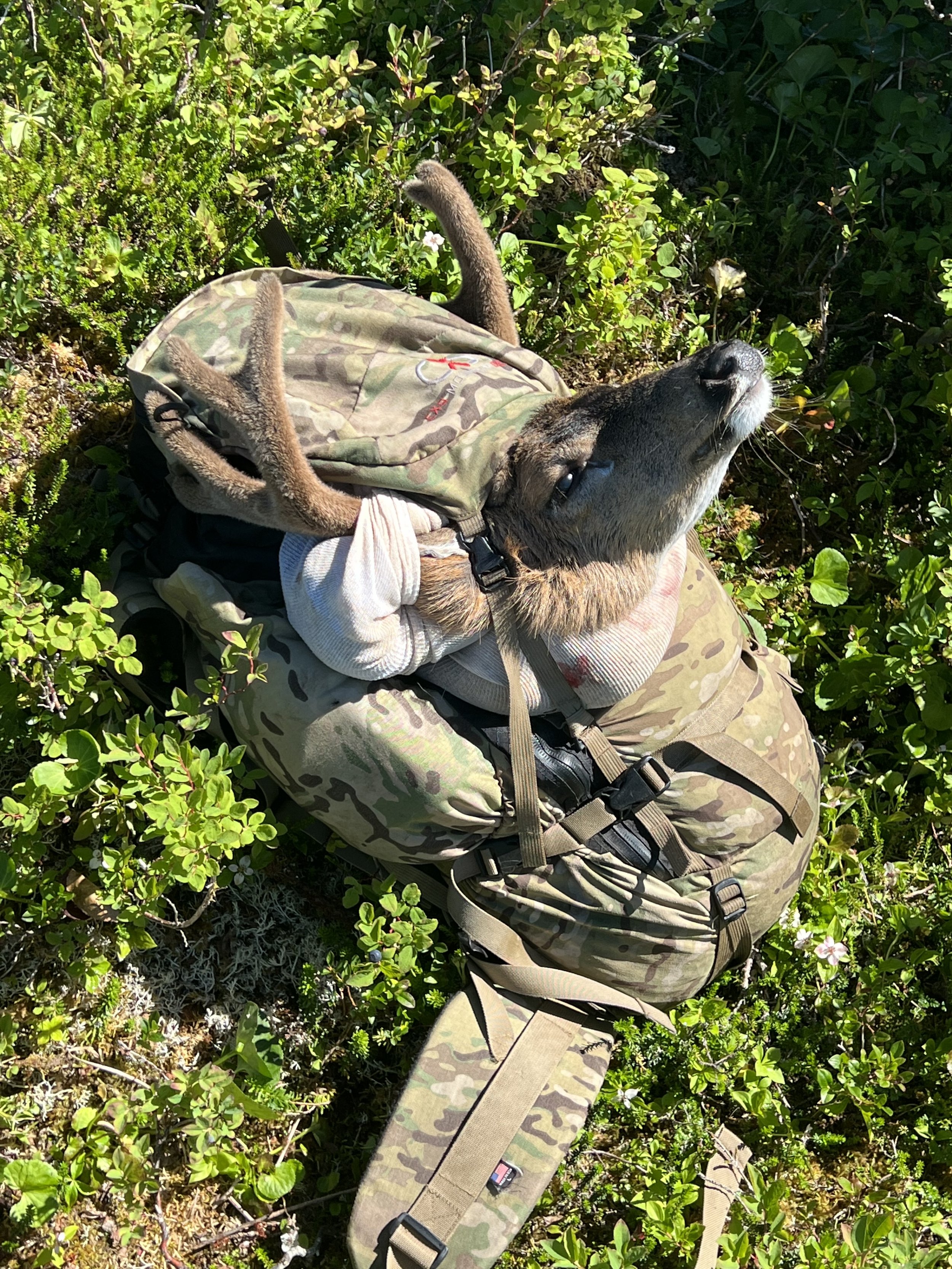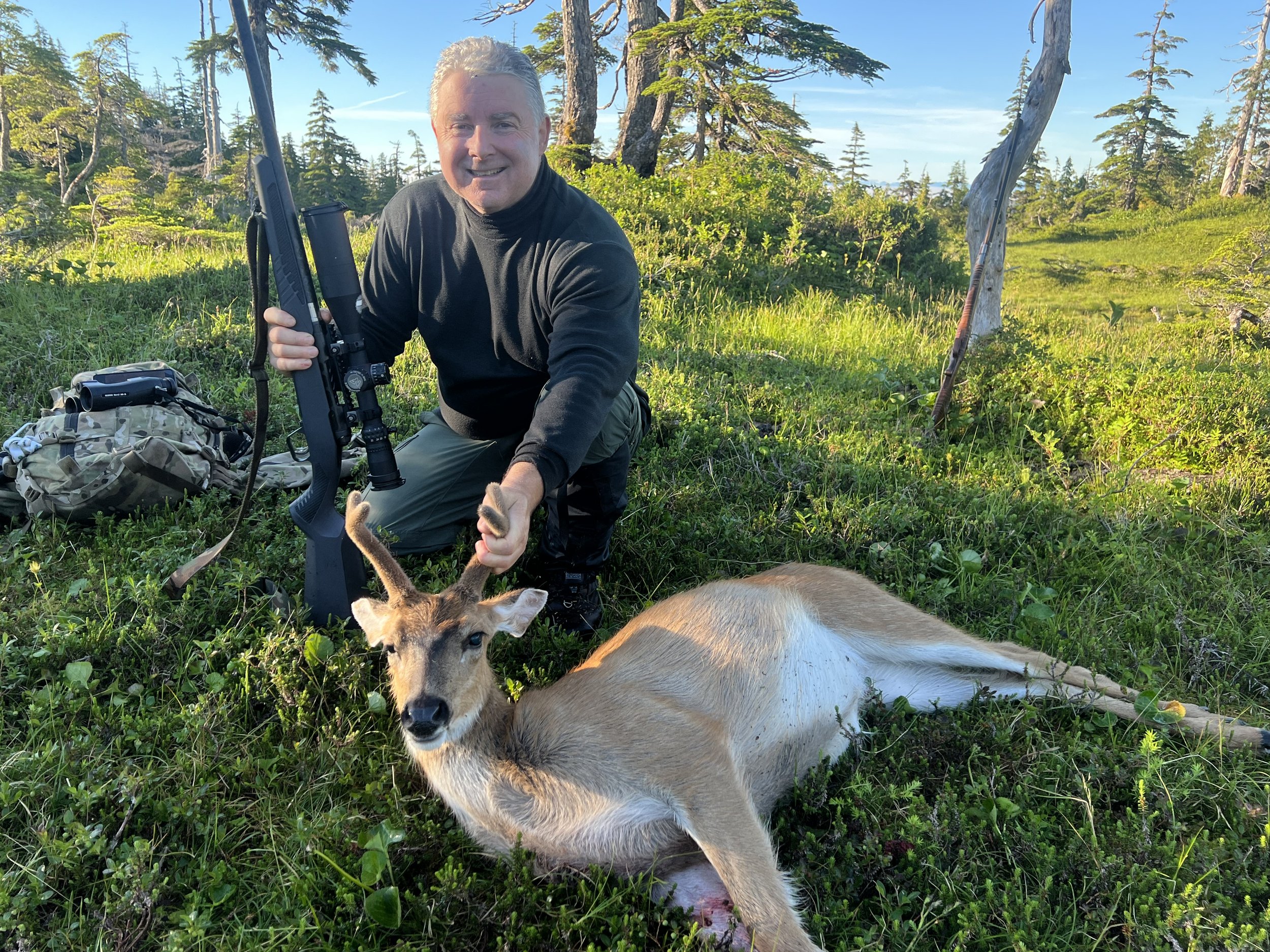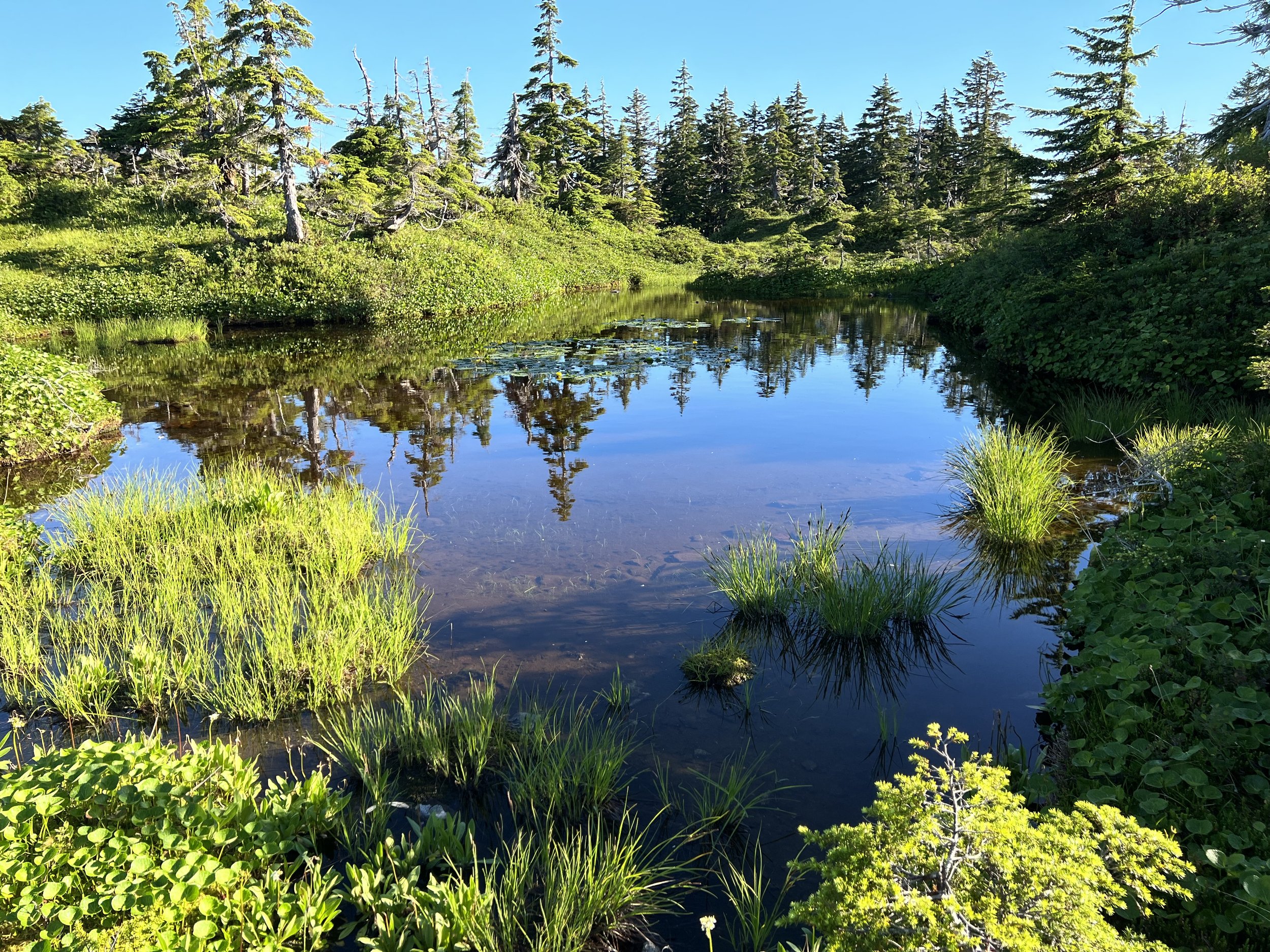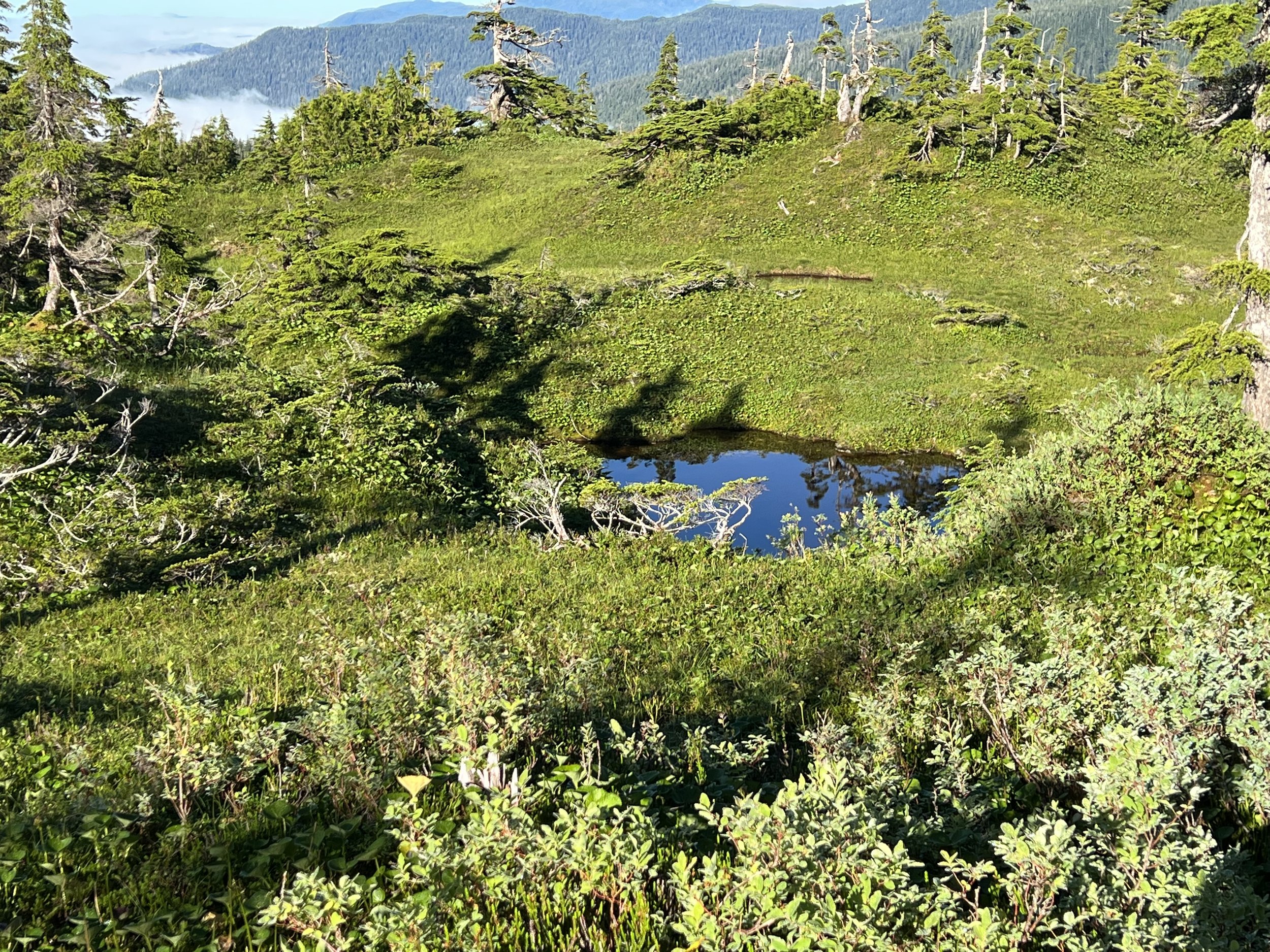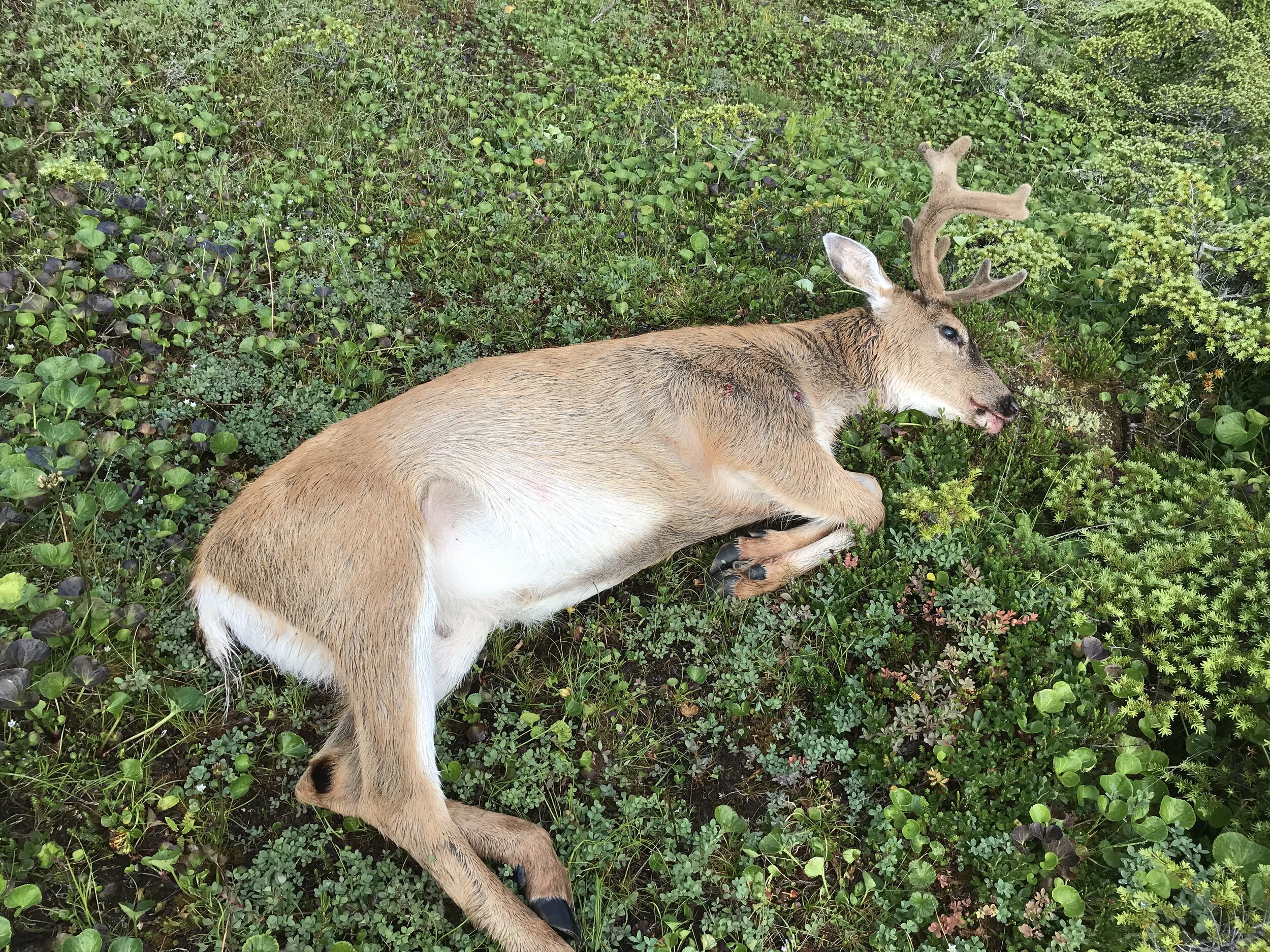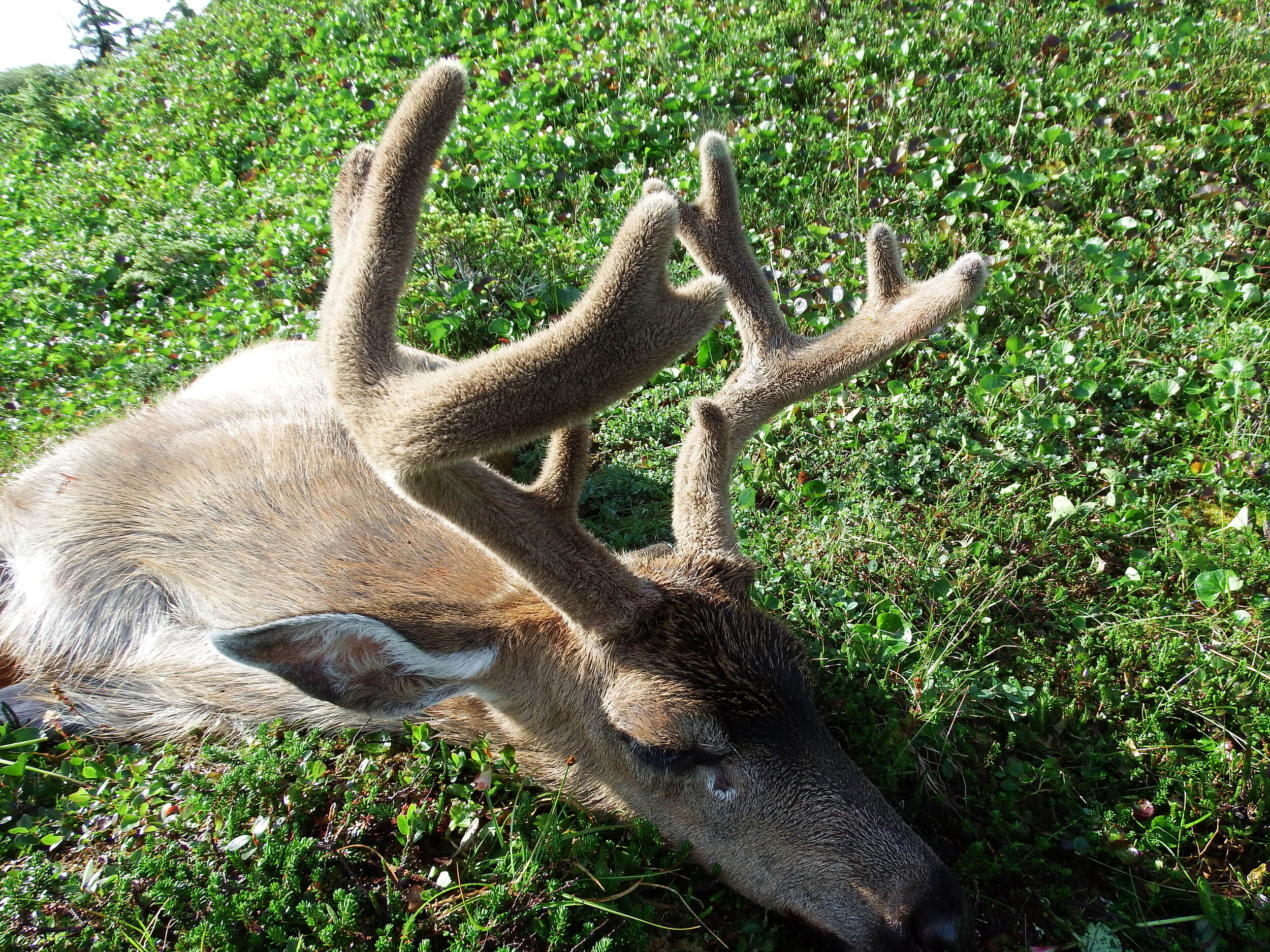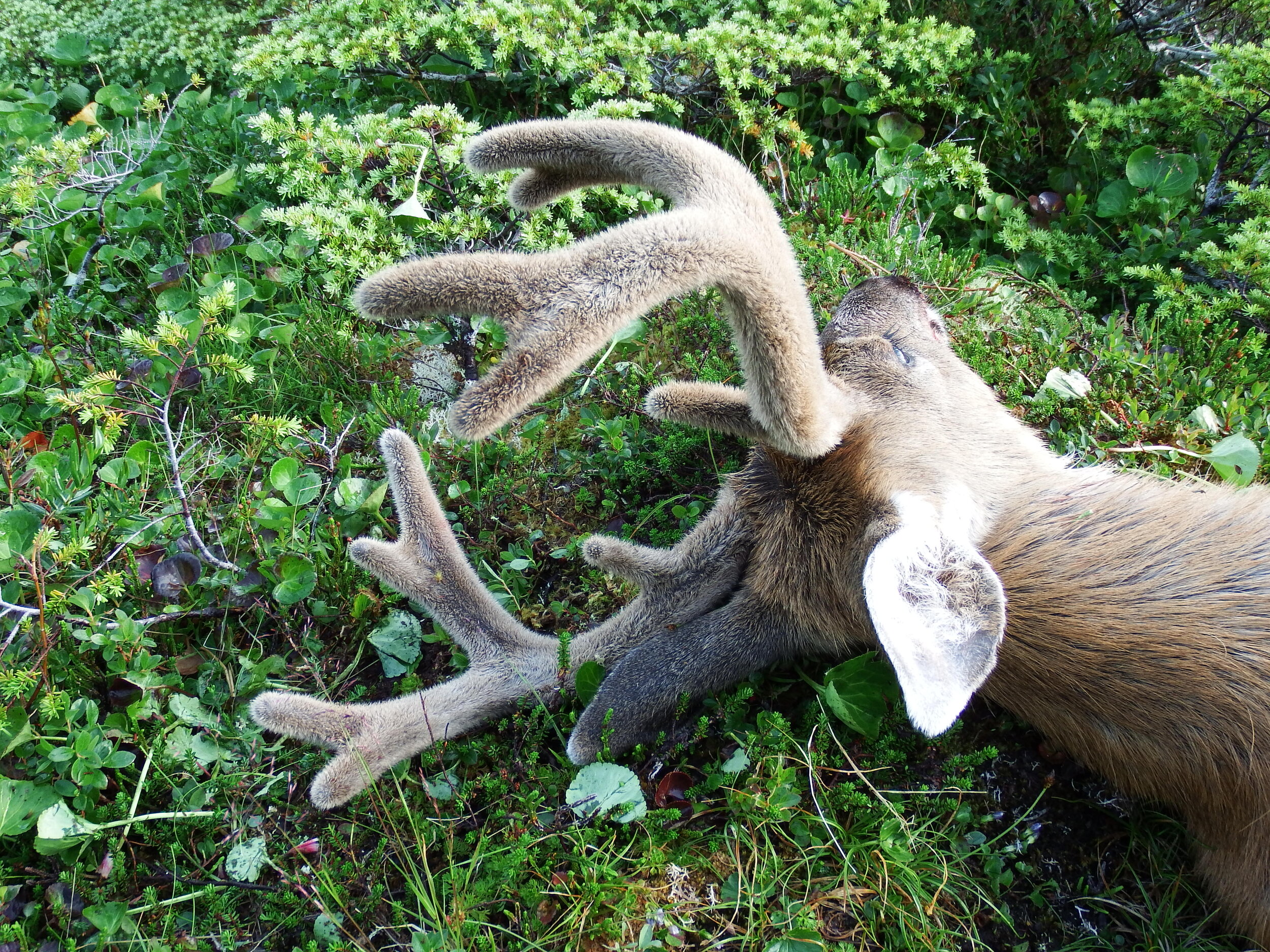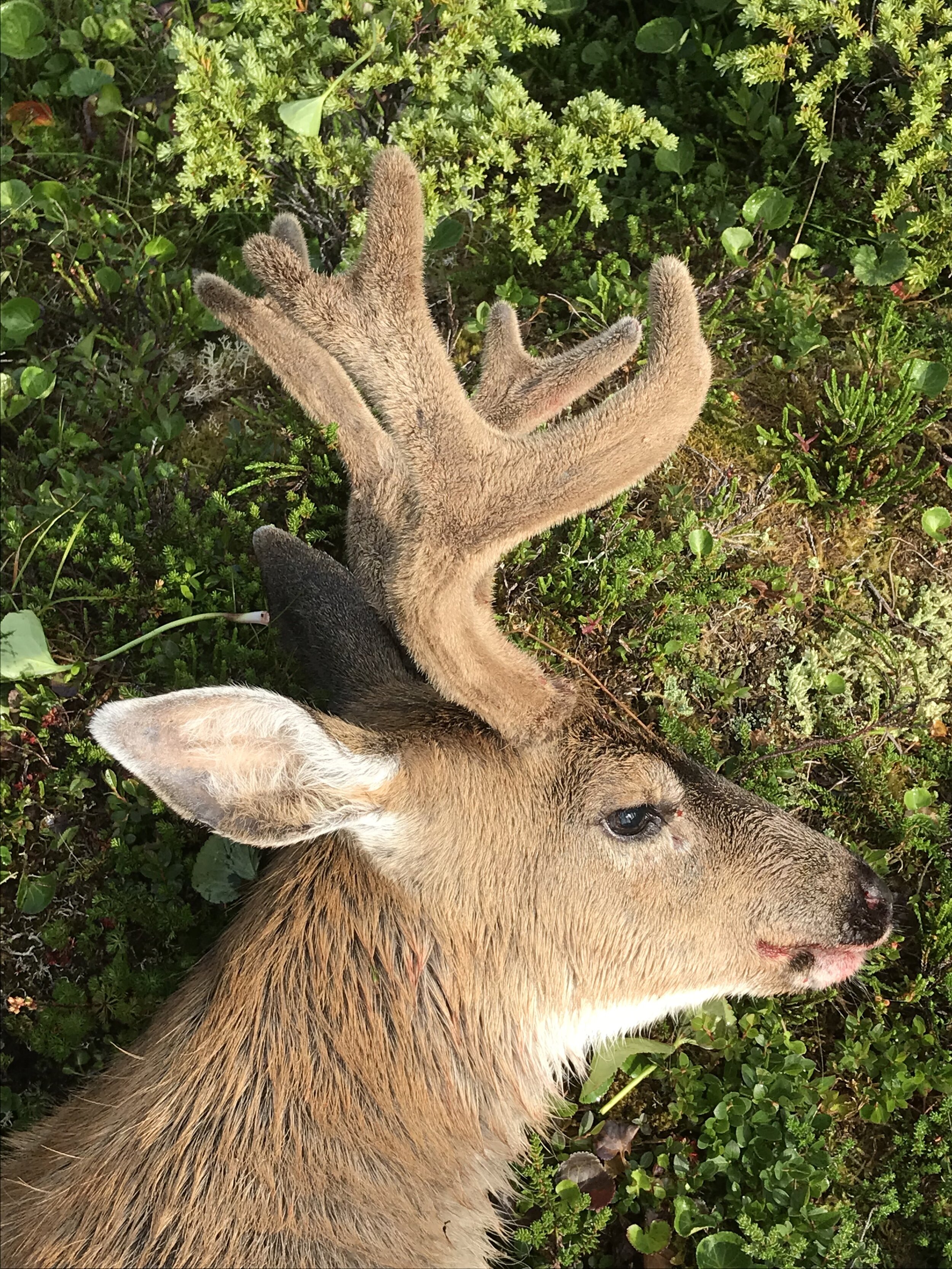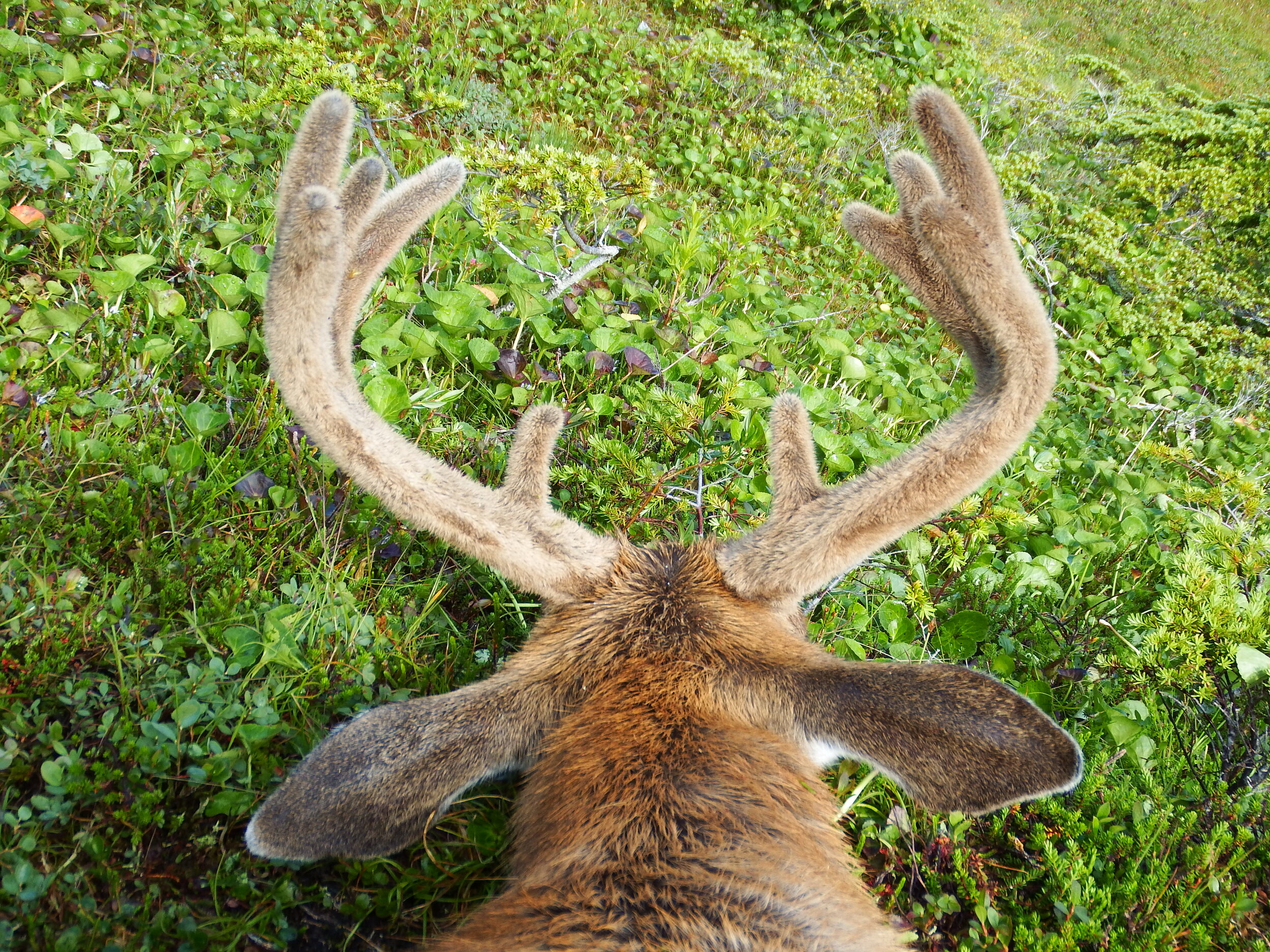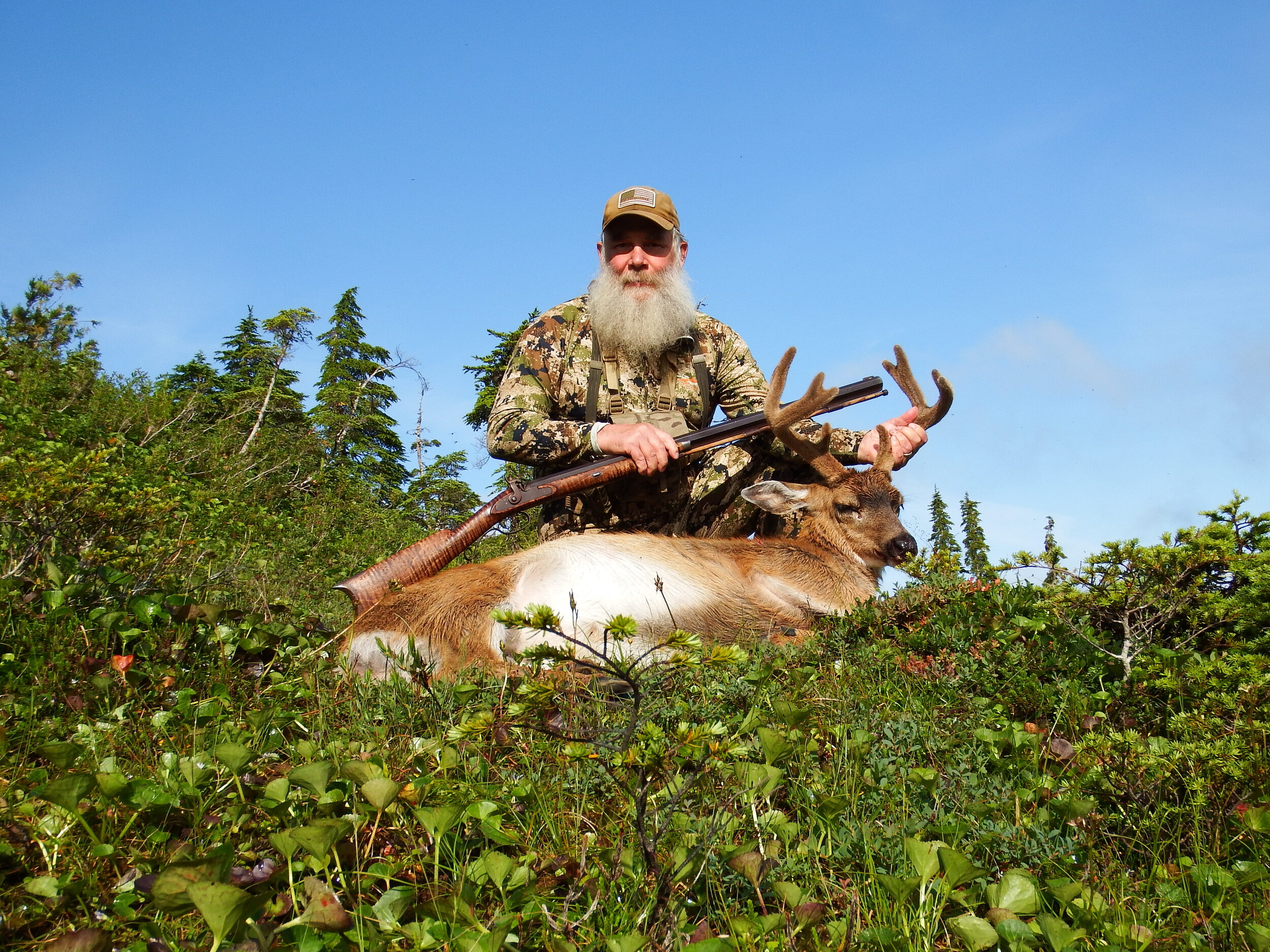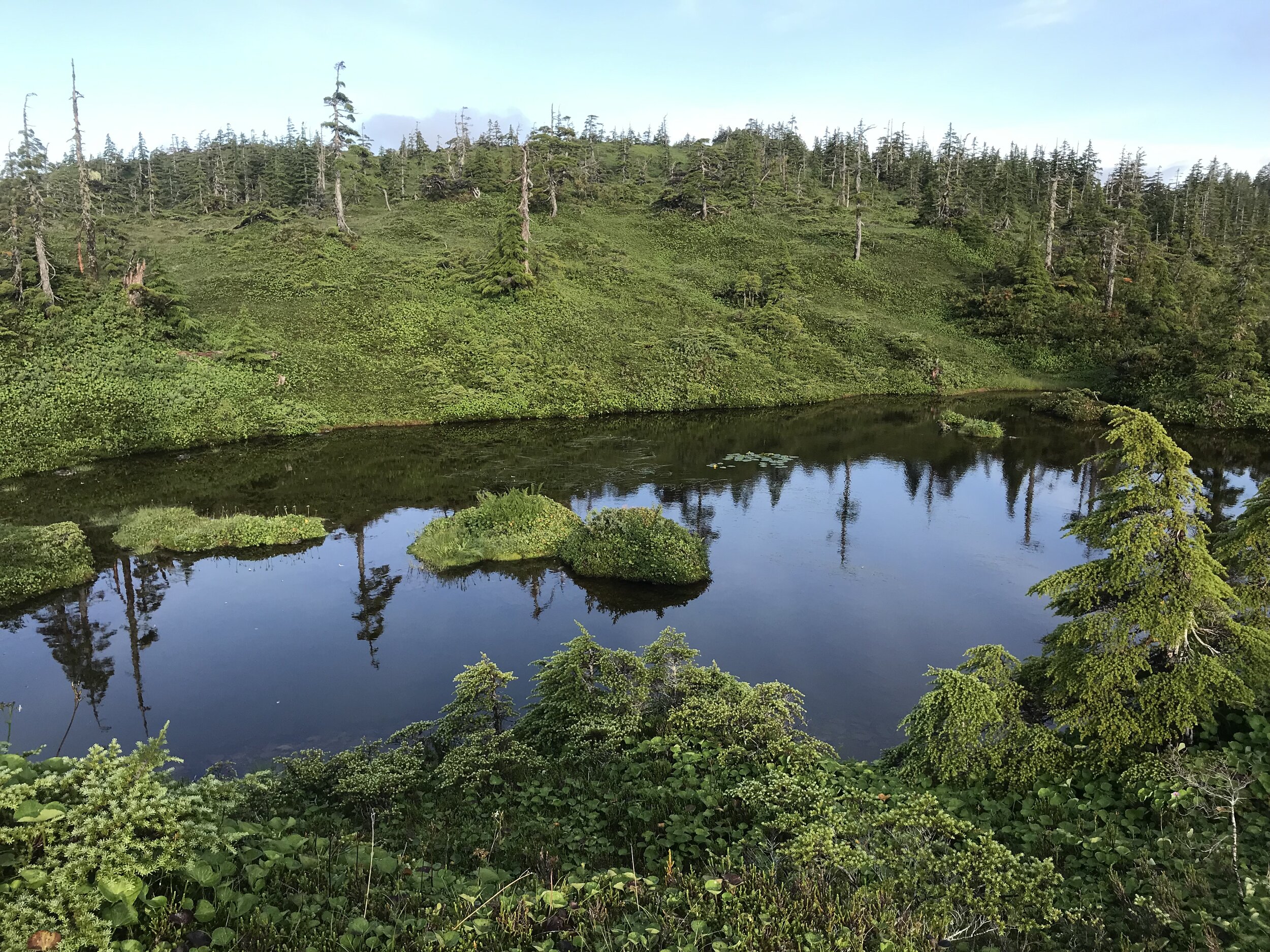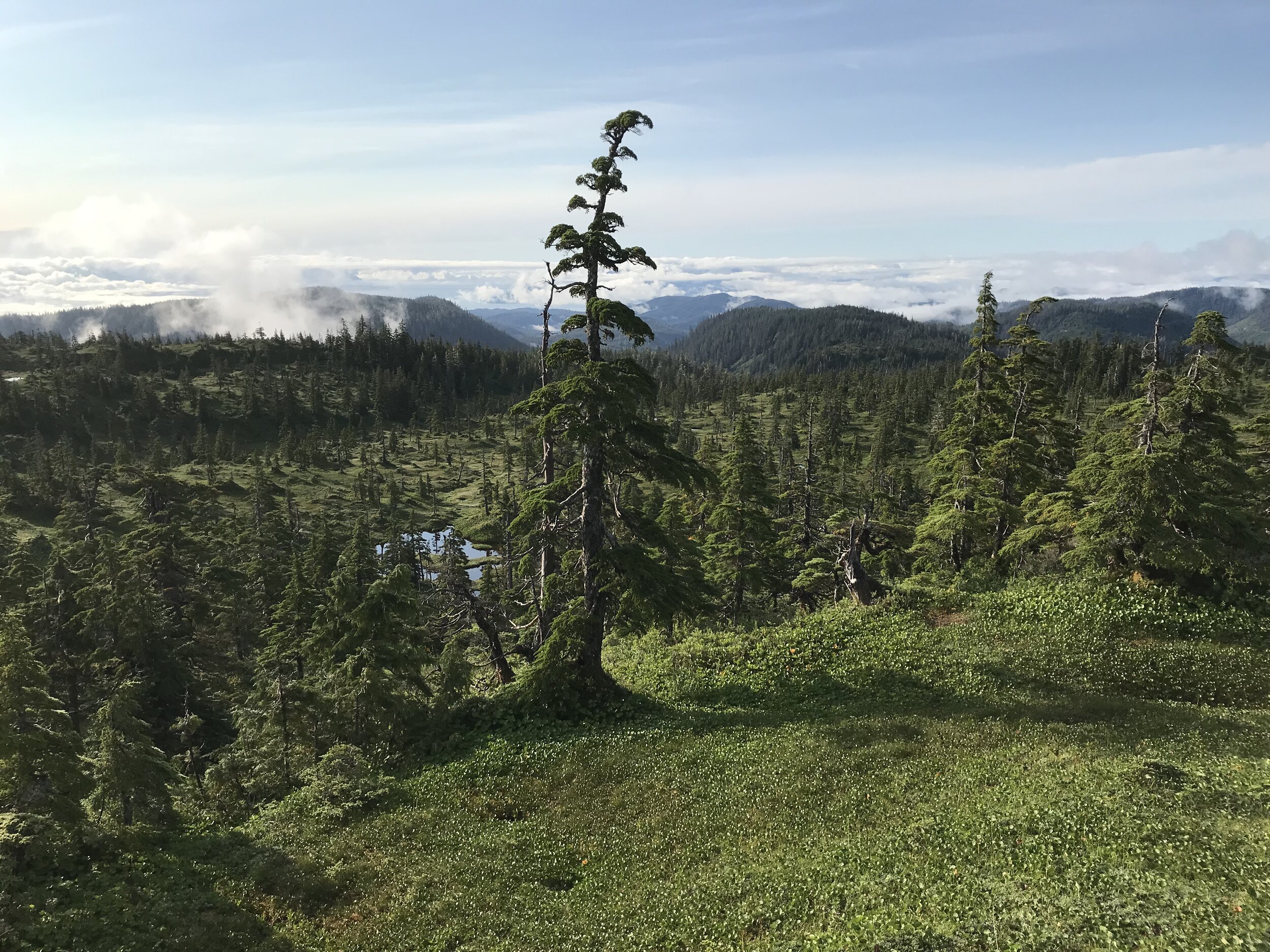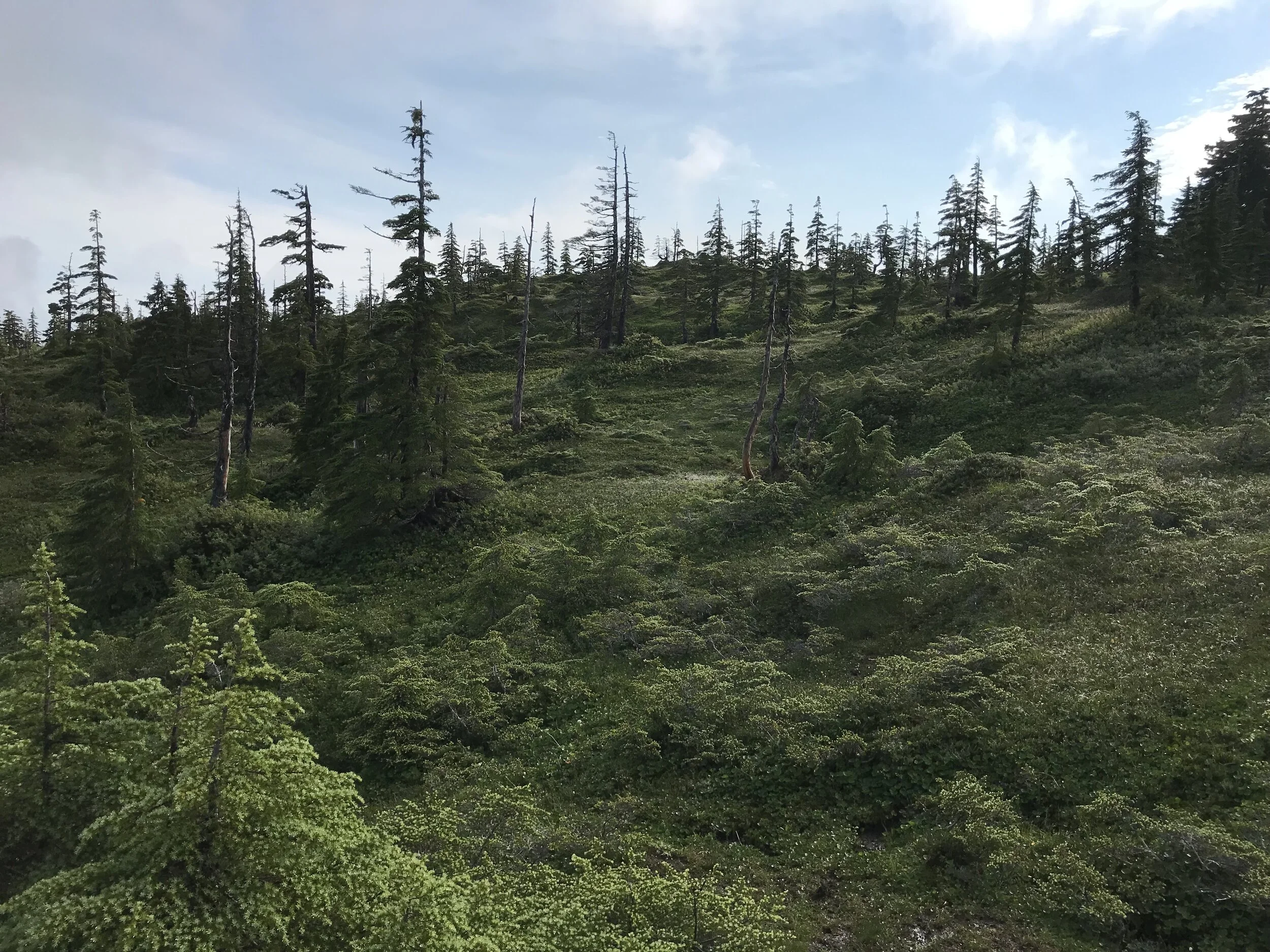August 7, 2021. And now the rest of the story, as Paul Harvey would have said. I woke at 2:58, two minutes before the alarm. I am always amazed how the mind keeps track of time while you sleep. I got up, dressed, and headed to the garage where my gear waited. At about 3:20 I headed out; it would take me an hour to reach the route I used to go up. I love the familiarity of well know places. Not only the terrain and how the game moves on it but all the memories of adventures with friends, past harvested animals, camps, failed stalks, wildlife encounters, etc. At 5:00 I was on the ridge, at 6:15 I was in what has been referred to as the “killing fields”. The weather was perfect. It had rained hard the day before and the morning’s dew added to the moisture. Fog drifted about the ridge and the rising sun was hidden by clouds to the east. I slowly glassed the surrounding basins and ridges. I found 2 does in their beds. I worked to the east using the north wind to my favor. I encountered another doe. After she moved off, I slipped into a stream valley. I looked north and there was a fine mature buck ~300 yards up the valley. A bit out of Hawken range. He had not detected me. I circled back making a wide loop. I crept forward as more and more stream valley become visible. I ranged the far bank at 90 yards, all in range. He was not there. I noticed a movement above to my right. He walked into view, just at the precise moment the sun broke through a hole in the clouds. He was silhouetted with the sun behind him but I could not get a good bead on him with my open sights. I waited for him to move; the shot would not be ethical. He slowly drifted over the ridge and out of sight. I followed, but he had moved to the timber below to bed for the day. I climbed to the north, circling west with the sun at my back. I jumped the two does I had seen bedded. I looked into the timber and saw the rear of a deer and with binoculars his antlers. He was headed up slope. As fast as I could, I tried to get above him. I crested a rise and he was standing 15 yards distant, a huge 4 x 3. He spun and dove off into the timber before I could raise the rifle. He finally stopped at about 110 yards; too far for an ethical shot. I sat down and watched him slowly move to the east and enter the timber. Hopefully he and I would meet again. I sat down and glassed a while, it was 7:45 am. I decided to work north to the end of the ridge hoping to find a few deer still bedded in the shadows. I also told myself to slow the heck down; glass more and walk less. Over the next 1/4 mile I saw a few does. At 8:15 I crested a small ridge and saw the rear half of a large deer bedded about 200 yards distant. The front of his body was hidden behind a bush and a snag. I dropped back and planned my sneak. I very slowly circled using the wind and cover. Just before cresting the last hill, I ranged the slope above him at 100 yards. He would be a bit closer. As I inched forward, He came into view; now standing looking right at me with most of his body behind the snag. I moved right to a small snag for a rest, I’d have to slip the round ball just past the snag he was behind. I fired. As the smoke cleared, I saw the buck stumbling to the right, running behind a small ridge. I reloaded and moved to find his tracks. Once on the tracks I began to find some blood, not the quantity I wanted. He went left and downhill. I followed his tracks for about 90 yards. I slowed as I crested the next ridge, I knew it dropped of steeply and I would have an unrestricted view of the valley below. Standing at 90 yards was a great buck and 4 does. Was it him? It has to be. I moved to a rest on a sang and hoped I was right. “Aim small, miss small!” I held a couple of inches high on the sweet spot and fired. The does scattered and the buck ran some 50 yards and collapsed, sliding down hill. I hoped it was the same buck and I didn’t have two down. I reloaded, and moved to the buck. It had to be him. I really never had had a look at his rack. I just knew he was a big mature buck. To my delight it was a great 4 x 4 with long eye guards. He was the same buck; my first shot had been a couple of inches forward, breaking his right shoulder and clipping the left lung, he would have died from the first shot. The second shot center punched him. I took time to admire the buck and the great place I hunted. I would be coming out heavy. It was 2.5 miles back off the ridge. Of course, I had shot him off the back side about as far as I could get from the vehicle. I slowly boned the deer and saved the cape for a friend. He was heavy, I was so humbled to have taken such a great animal and so thankful for the meat he would provide. The weather stayed cool and there was a lovely breeze to keep the bugs at bay. When I got home, Karen and I weighed the pack at 102 pounds. Lots of meat. I love the Tongass National Forest and our public lands.
